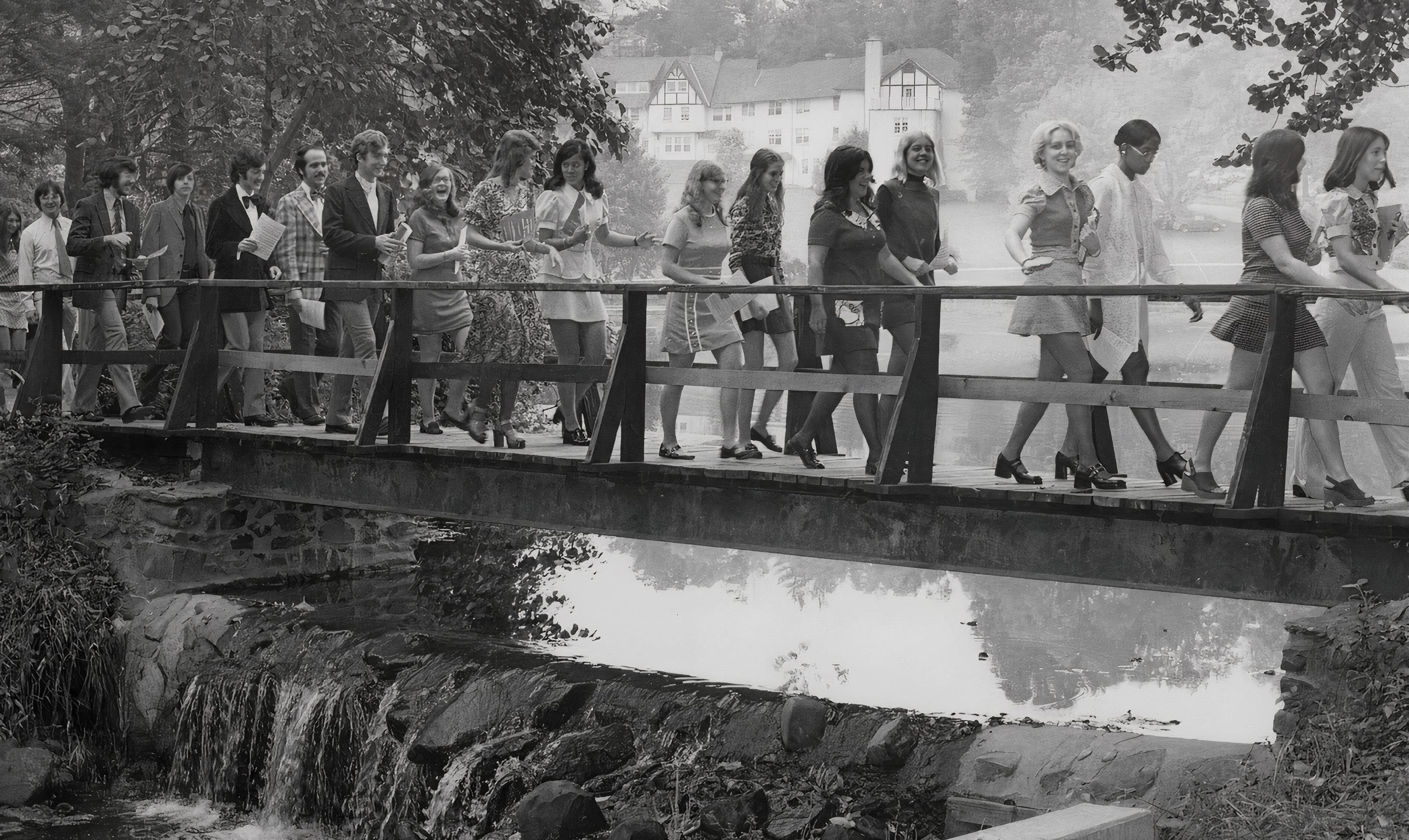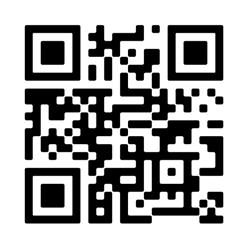Celebrating a Century of God's Faithfulness


Celebrating a Century of God's Faithfulness


Dear Alumni and Friends,
One hundred years ago, a vision set in place by six courageous pastors set the trajectory for a lasting legacy. The investment made in that room on Chestnut Street, Philadelphia, went far beyond the $26.00 of seed money that Rev. Dr. John Hainer placed on the table – it was an investment of mission, prayer, and unwavering faith.
A century later, we share the privilege of celebrating this legacy with Eastern University’s flourishing future at the forefront of our mind. I am overcome with a deep sense of humility and gratitude when I reflect on the role each of us has had the privilege to play in the long and vibrant history of our school.
Our Centennial verse, Psalm 100:5, declares, “For the Lord is good and his love endures forever; his faithfulness continues through all generations.” We have seen this enduring love at work in the life of our institution! The same faithfulness and love that carried our founders through the unknowns of our early years have sustained and encouraged us through decades of celebrations, trials, fears, and joys. The surety of God's enduring love is the cornerstone of our community.
As you continue reading and see the common thread of this faithfulness woven through each and every page, my prayer is that you reflect not only on how it has been a foundation for Eastern University, but how that same unquenchable faithfulness and love is available to you as well. We serve an awesome, all-powerful, and enduring God who remains steadfast through the ages. "Great is Thy faithfulness!"
From our humble beginnings as Eastern Baptist Theological Seminary to our thriving present-day University community of over 8,700 students, we are truly in awe of God’s work over these last 100 years.
Thank you for your prayers and support for Eastern University, and thank you for the part you play in this historic moment.
Better together, Ronald A. Matthews, President
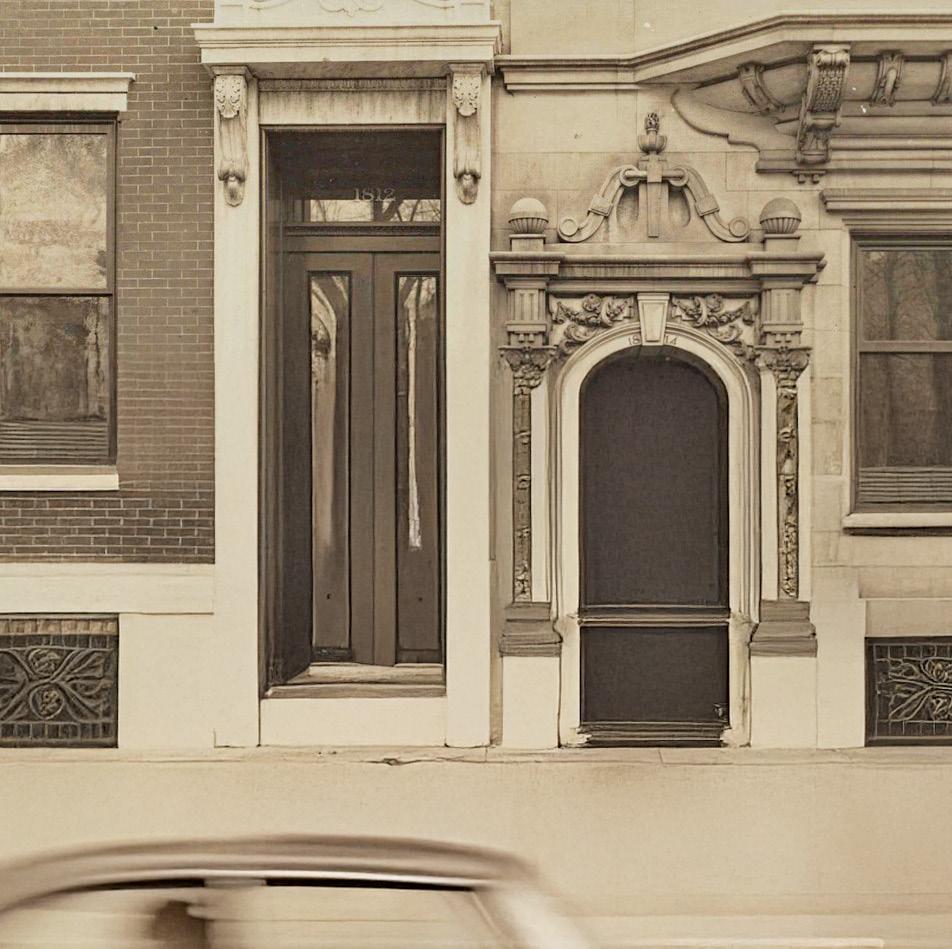
Since its founding, Eastern University has been grounded in a shared faith and a commitment to community. This chapter explores the roots of that community, the values that define us, and the people who have brought our mission to life.

The vision for transformative education comes to life through the people and places that shaped our dream. This chapter honors the life-shaping spaces and trailblazing leaders that advanced our mission in Christian education.
The conception of our mission
An expansion into faith-rooted academics
The presidents who pioneered our history
Landmarks of the century

Eastern University is a diverse, Christ-centered community preparing graduates to impact the world through Faith, Reason, and Justice.
publisher / KELLY GODDARD
EDITOR-IN-CHIEF / ALLY (HOLMES) ROSARIO ’14, MEd ’21
Editor / ERIN AHLEFELD
Creative Director & Lead Designer / DANIEL PEIRCE , MTS ’23
Designers / ALAINA MOSSO & KATIE SAMSON
WRITER / HOLLY SCOFFONE
ADDITIONAL PHOTO & ILLUSTRATION CREDITS / ANDREW HOOD (10)
RLSP ARCHITECTS (38)
BEAU ROSARIO | PHILAMEDIA (45)
Please send comments or article suggestions to: media@eastern.edu
Alumni news should be sent to: alumni@eastern.edu
Palmer Seminary alumni news should be sent to: palmeralum@eastern.edu
PUBLISHED BY Marketing and Communications
1 00:5

For 100 years, the Lord has graciously guided Eastern from our conception as Eastern Baptist Theological Seminary to our current flourishing community. Psalm 100:5 fittingly grounds our gratitude as we reflect on God’s faithfulness throughout the ages and the promise of enduring love for years to come.
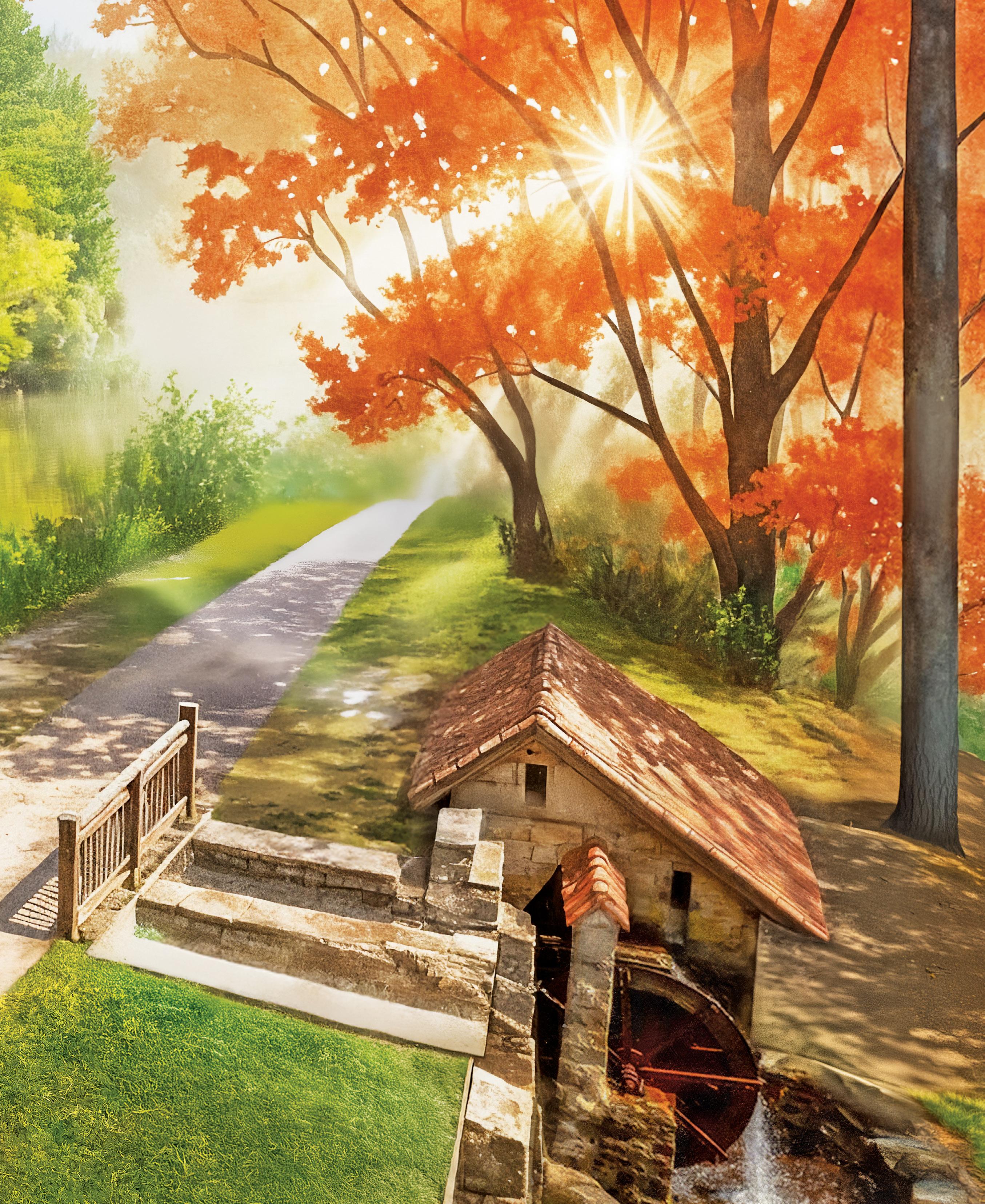


Since its founding, Eastern University has been grounded in a shared faith and a commitment to close-knit community. This chapter explores the roots of that community, the values that define us, and the people who have brought our mission to life.
On March 19, 1925, at two in the afternoon, six ministers gathered at 1701 Chestnut Street in Philadelphia to discuss their shared vision of Christcentered, world-changing education. It all started with a $26.00 investment.
The conviction of Revs. Charles T. Ball, Harry W. Barras, Groves W. Drew, Ralph L. Mayberry, John A. Hainer, and Gordon H. Baker laid the framework for what would become Eastern Baptist Theological Seminary (EBTS) and later Eastern University. The religious landscape in the U.S. was in the midst of a seismic shift in the late 19th and early
20th centuries. Darwinism, archaeological discoveries, and new approaches to Biblical scholarship sent rifts through Christianity in the States, prompting the founders of EBTS to create an academic institution that was “conservative, yet progressive,” with the salvific work of Christ serving as the cornerstone, grounding them in an ever-changing culture.
“The salvific work of Christ served as the cornerstone, grounding them in an ever-changing culture.”
The summer of 1925 was devoted to designing an educational philosophy and recruiting faculty. The Board of Trustees of this new seminary purchased a building on South Rittenhouse Square and recruited a staff of nine full-time faculty and six additional instructors, intentionally made up of both men and women. With a week before the start of classes, EBTS faced a critical challenge: it had no curriculum. The Seminary's first president, Rev. Charles Ball, tasked William W. Adams with creating one over the weekend of September 19.
A few days later on September 22, 1925, the Seminary welcomed its first students, who were separated into four schools: the School of Theology, the School of Religious Education, the School of Missions, and the School of Sacred Music. EBTS even welcomed Miss Edith

Gardner, a female student, into the inaugural cohort. The curriculum, initially written entirely in longhand thanks to Adams' very productive weekend, was revised and adjusted over the first year to meet the needs of each of those schools. In May of that year, the Seminary celebrated its first 11 graduates.
The next several years brimmed with innovation and experimentation. In November of its first year, EBTS launched its initial foray into distance education. A correspondence program was created to provide both pastors and laypeople affordable, convenient, and robust theological education all through the mail. By 1930, the Seminary’s Correspondence Course received the endorsement of the Baptist State Convention of New York.
Under President Palmer, the Seminary expanded its mission, relocated to Wynnewood, and embraced broader societal needs.


1 926
The Seminary celebrates its first 11 graduates.

EBTS continued to grow. More property was purchased around Rittenhouse Square to accommodate resident students. Dr. Austen K. de Blois was voted in as the second seminary president in 1926. Dr. de Blois, a widely respected scholar, aimed to build an institution whose graduates were as intellectually equipped as those from more established or historic seminaries. He also developed EBTS’s iconic library, saying, “I see no reason why, by patience and diligence, we should not gather a thoroughly representative Baptist library which will compare favorably with any in the world.”
Theological Seminary continued to navigate societal and economic shifts. Under its third president, Dr. Gordon Palmer, the Seminary moved in 1940 from the city to Wynnewood on Lancaster and City Avenues, where it would reside until 2012. Its commitment to providing theological training to those who normally would not be considered for graduate education led to the birth of Eastern Baptist College, now Eastern University.

1932
The Collegiate Division within the Seminary is established.
1990 Mozart manuscript found at the Seminary sells for $1.5 million.
2005
The Seminary is renamed Palmer Theological Seminary.
In 2003, EBTS rejoined the University and was renamed Palmer Theological Seminary in 2005 after President Palmer.
The descriptor “conservative, yet progressive” persists and is exemplified in Palmer’s mission, “The Whole Gospel for the Whole World through Whole Persons.” Palmer’s commitment to uplifting marginalized voices that began with female instructors later included faculty of color, such as Wallace Smith, Orlando Costas, and many others. The Openseminary program, online Master of Divinity and doctoral programs, the West Virginia location, and the Maestría en Estudios Teológicos en Linea all sojourn ahead on the trail blazed by the foundations established 100 years ago.
Through many transitions, some of which were not without heartache, Palmer Theological Seminary continues to innovate to provide robust theological and pastoral training to the diversity of Christ’s Church across the world.
Inspired by the research of Randall L. Frame in Praise & Promise, A Pictorial History of The Eastern Baptist Theological Seminary.



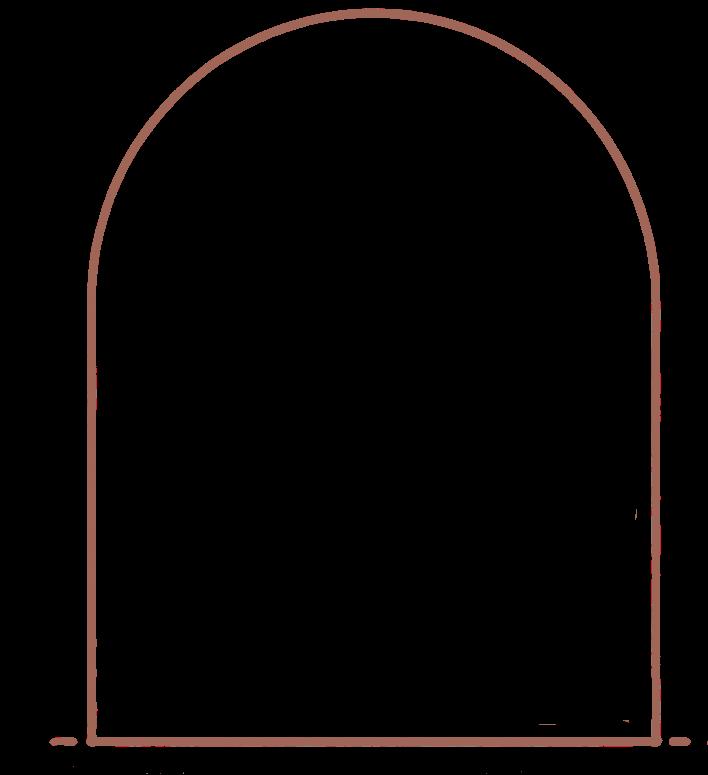




20 1 6
Palmer Theological Seminary relocates to its home on the St. Davids campus.
By Dr. Deborah Watson

Seminary were committed to the spiritual and social implications of the Gospel of Jesus Christ. This commitment was memorialized in the motto, “The Whole

This motto, which for the past 40 years has included the addition “Through Whole Persons,” has guided both the Seminary and University for all of its 100 years in service to God, the Church, and the world.


The Seminary’s motto serves as a continual reminder that we exist to point all people to the Lord Jesus – God’s love in human form, our source of life, forgiveness, wholeness, and newness in this world and beyond the grave, and our hope in a world that is in need of it. As a result of this reality, we are transformed people who take our place in the ever-expanding outflow of God’s love in and through Jesus, for the created world and the peoples of the world.
We are those people today, and pray we always will be.


The Seminary Adds an Undergraduate College, then Expands into a University
EASTERN’S 100-YEAR HISTORY is built upon a vision that began with the founding of Eastern Baptist Theological Seminary (EBTS), whose legacy continues to shape the institution today. The addition of a liberal arts college to the Seminary was a transformative step that reflected the changing needs of students, society, and the institution itself. As the institution expanded, Eastern’s faith-rooted foundation endured, providing a constant guiding force throughout its progression.
In 1952, Eastern Baptist College (EBC) was established as a separate entity from EBTS as a response to a growing demand for a more robust collegiate education. Many of the Seminary’s students lacked formal collegiate degrees, which limited their academic and professional opportunities. After purchasing and moving to the former Charles S. Walton estate in St. Davids, PA, the College began offering a four-year liberal arts degree, with a focus on laying academic foundations in order to train students for ministry and leadership roles. The decision to offer a full four-year degree program helped bridge the academic gap that students were missing while equipping them with a broad-based undergraduate education that enabled them to better serve their communities, the Church, and the world.
Although EBC’s geographical roots were planted on a different campus than EBTS, it remained deeply committed to its faith-filled identity. Students were encouraged to take courses on religion, attend chapel services, and participate in spiritual practices. Similar to the
Eastern we know today, faculty members would often begin class with prayer, ensuring that the school’s Christian ethos permeated all aspects of campus life. Faith remained the cornerstone of the institution’s identity.
The early years of EBC were not without their struggles. The College faced financial difficulties, enrollment challenges, and periods of uncertainty that threatened its future. Through persistence, prayer, a shared commitment to the school’s mission, and the grace of God, EBC weathered these storms.
As the student body grew, it became clear that it was essential to create opportunities for fellowship and social connection in order to develop a closeknit, communal culture. Traditions like Sadie Hawkins Day—a lighthearted event where women asked men to be their dates—and Senior Sneak—where the senior class would secretly escape campus overnight—became beloved aspects of student life that changed with each new generation.
Athletics, particularly basketball, also became a key source of school spirit. The basketball team was a center of energy, and students packed the gym to cheer on their peers, creating a lively atmosphere on campus and a sense of belonging. Students became interested in the College not only for its academic offerings and the opportunity to grow spiritually, but also for the communityoriented culture, which has grown even stronger today.

1952
Eastern Baptist College is founded as a separate institution and moves to the Walton Estate in St. Davids, PA.
1956
The first four-year class graduates 26 people.
1971
Eastern Baptist College is renamed Eastern College.
1982
Eastern launches its first graduate program, an MBA.
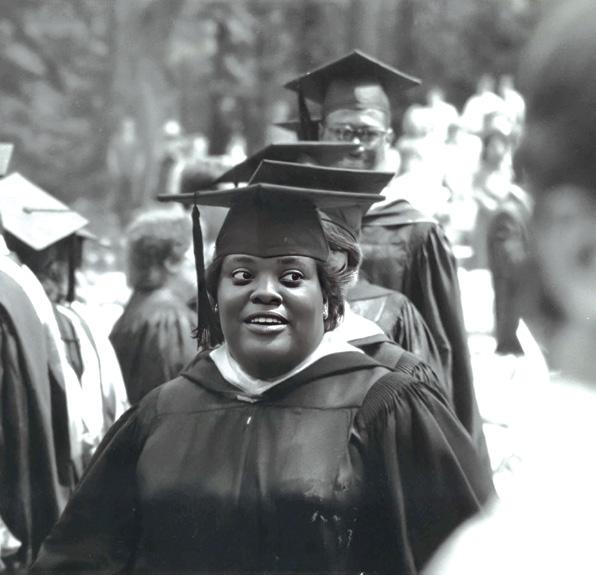
1987
Dr. Roberta Hestenes becomes the first female president in the history of the College and Seminary.
1995
The Wanamaker Eagle statue is presented to Eastern College.
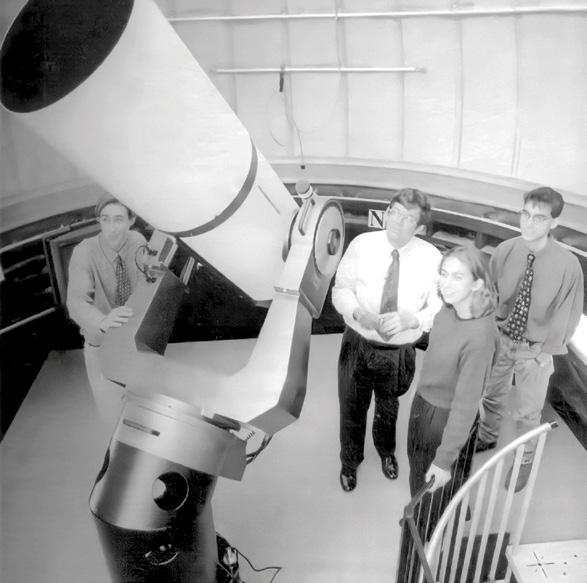
1996
The Bradstreet Observatory is completed and named after Dr. David Bradstreet ’76.
1999
The Templeton Honors College opens through gifts from Drs. John and Josephine Templeton.
2001
Eastern is granted university status and becomes Eastern University.
2003
EBTS and Eastern University reunite and EBTS becomes the Seminary of Eastern University.
2020
Eastern launches its first LifeFlex program and navigates the COVID-19 pandemic.
2023
Eastern doubles enrollment through innovation and creativity.
“While the institution has grown and changed over the decades and overcome many challenges, its faith-rooted foundation has remained a constant.”
In 1972, after nearly two decades as Eastern Baptist College, the institution changed its legal name to Eastern College: A Baptist Institution.
A few years later, in 1982, Eastern launched its first graduate program, the Master of Business Administration (MBA), marking a significant milestone in its development as a comprehensive institution of higher education. This expansion was part of a larger effort to meet the evolving needs of a society that was increasingly seeking professional and graduate-level education.
By the turn of the 21st century, Eastern College had grown into a vibrant institution, offering a wide array of undergraduate and graduate programs, leading it to achieve university status in December of 2001. This status reflected its expanded academic offerings, larger student body, and greater impact on the surrounding community.
Eastern College took another significant step forward in 2003 when EBTS rejoined the institution and was later renamed Palmer Theological Seminary in 2005 in honor of the Seminary’s third president, Dr. Gordon Palmer. This move
solidified the connection between the College’s theological roots and its expanding academic offerings, ensuring that Eastern and Palmer’s commitment to faith-based education stayed at the heart of its mission, where it remains today.
Today, Eastern University’s flourishing academic community is a testament to the vision and persistence of those who came before, from the founders of EBTS to the many individuals who shepherded and stewarded the growth of Eastern Baptist College and Eastern College. While the institution has grown and changed over the decades and overcome many challenges, its faith-rooted foundation has remained a constant, shaping the lives of thousands of students who have gone on to make meaningful contributions in ministry, business, education, and beyond.
As we look to the future of the institution, we do so with a deep gratitude for our past and a continued commitment to providing faithcentered, transformative education for generations to come.

with former president david r. black and President ronald a. Matthews
THE MOTTO of Faith, Reason, and Justice, coined by President David Black, has served Eastern as an identity marker for over 20 years and continues to shape the mission of our institution.
Reflecting on the origin of the motto, Dr. Black shares, “Before joining the Eastern community in 1997, I asked Dr. Tony Campolo to describe what differentiated Eastern from other Christian and secular institutions. Tony responded with Micah 6:8, that ‘the Lord has shown us what is good: to do justice, love mercy, and walk humbly with our God,’ and 2 Timothy 2:15, that we are ‘to study to show [ourselves] approved’ for that kind of goodness as a vocation.”
Dr. Black continues, “After joining the community, I asked other colleagues, alumni, and students the same question. My intent
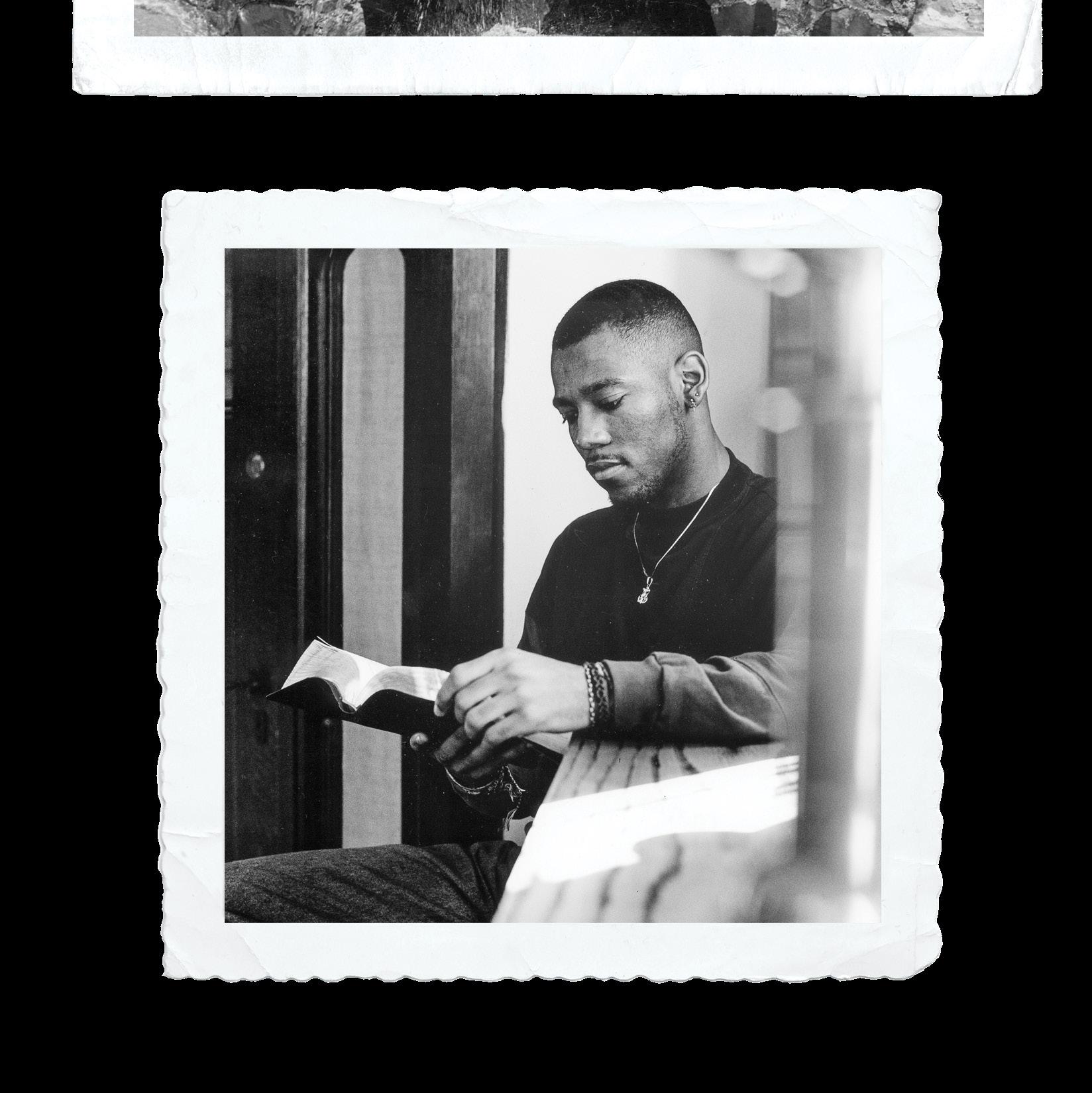
was to distill their and Tony’s responses into a short phrase that would capture Eastern's unique character. The phrase that emerged, ‘Faith, Reason, and Justice,’ became Eastern’s motto, encapsulating the ethos of the Eastern community and reflecting the way in which the Holy Spirit calls, informs, and forms students at Eastern for lives of transformational service.”
The phrase became so beloved and descriptive of Eastern’s identity that in 2021, the language was officially woven into Eastern’s updated mission statement, which declares: “Eastern University is a diverse, Christ-centered community that prepares graduates to impact the world through faith, reason, and justice.”
Reflecting on the lasting impact of these powerful words, President Ron Matthews

shares, “What was originally our motto, birthed from President Black’s forwardthinking vision, has become an integral part of our mission statement. We are empowered by Faith, educated by Reason, and mobilized to work toward Justice, following Jesus the Shepherd who calls his sheep to feed the hungry, welcome the stranger, clothe the naked, visit the sick and the incarcerated, and care for the widows and orphans (Matthew 25:35-36 and James 1:27).”
Looking to the future, President Matthews reflects, “My prayer and commitment is that Eastern University will be faithful to our mission of Faith, Reason, and Justice in our distinctive space in Christian Higher Education, and that Eastern will generously and positively impact the world until the glorious day of Jesus’ return.”
By Dr. Nilsa R. Graciani
EASTERN UNIVERSITY celebrates its Centennial, Esperanza College is proud to be a part of that history as we work to transform the lives of our students.
In 2000, inspired by Eastern’s mission, President and CEO of Esperanza Reverend Luis Cortés formed a partnership with Eastern’s former President, Dr. David Black, to create Nueva Esperanza Center for Higher Education (NECHE). The vision was to create the first college dedicated to providing access to quality higher education and economic mobility to the underserved Latino community of Hunting Park in North Philadelphia.
The first cohort at NECHE consisted mainly of non-traditional students. The majority were native Spanish speakers, many with limited knowledge of English. A year after the pioneer class graduated in 2004, the College was awarded status as a branch campus of Eastern University and was designated a Hispanic Serving Institution (HSI).
One of the first graduates, Rosie Pagan ’05, shares: “I was looking for a place that genuinely cared about my educational, professional, and spiritual growth. Here, I could find all these attributes.” Rosie graduated from NECHE in 2005 and went on to complete her bachelor's and master’s degrees. She now serves as an adjunct professor at Esperanza.
Over the last two decades, the College has grown and experienced many changes. The name was changed to Esperanza College of Eastern University in 2005, the same year Eastern Baptist Theological Seminary was renamed Palmer Theological Seminary. New facilities were opened, expanded, and enhanced. New academic programs were added. The student population shifted to include both traditional and Early College students. Yet in the midst of the change, what remains the same is Esperanza’s commitment to its mission: “to enhance the knowledge, skills, and outlook of young people and adults so that they can live even more thoughtful, positive, productive, and purposeful lives.”
Ultimately, the success of the College is measured by the difference that we make in our students’ lives. Maria Genao ’25, who joined our Early College program last year, echoes the sentiment of many, that Esperanza changed her life for good and provided the space, environment, people, and activities that bring her joy. “Just being here lifts my spirits and helps me forget the difficult times I go through,” she explains. Maria feels closer to achieving her dream of graduating college and is appreciative of the opportunity.
Esperanza College currently serves over 280 students and continues to plant transformative roots deep in the community. The associate

degree program, early college, dual enrollment, and summer experience programs including education, Esports, and STEM all bring Esperanza’s mission to life.
Esperanza has opened many doors for the students and neighbors that have experienced its programs and community. “My experience at Esperanza College has been a memorable one and continues to transform my life,” Rosie shares. “Through Jesus Christ and the Esperanza community, I have become a better human. Esperanza College is a beacon of hope in North Philadelphia."
Dr. Nilsa R. Graciani serves as Acting Dean of Esperanza College of Eastern University.


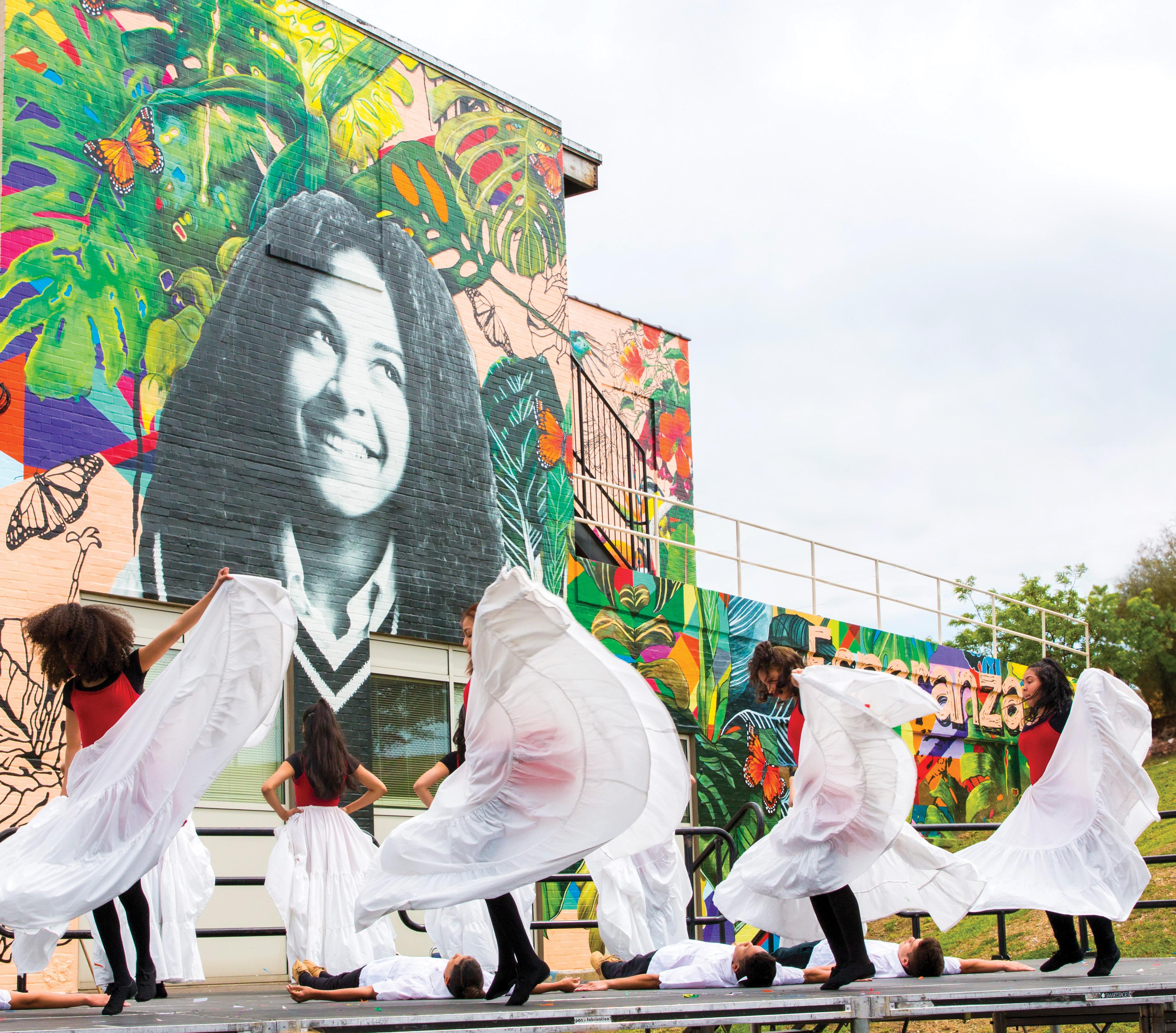
Through Jesus Christ and the Esperanza community, I have become a better human. Esperanza College is a beacon of hope in North Philadelphia.”


Celebrate with us as we look back on our Lasting Legacy.
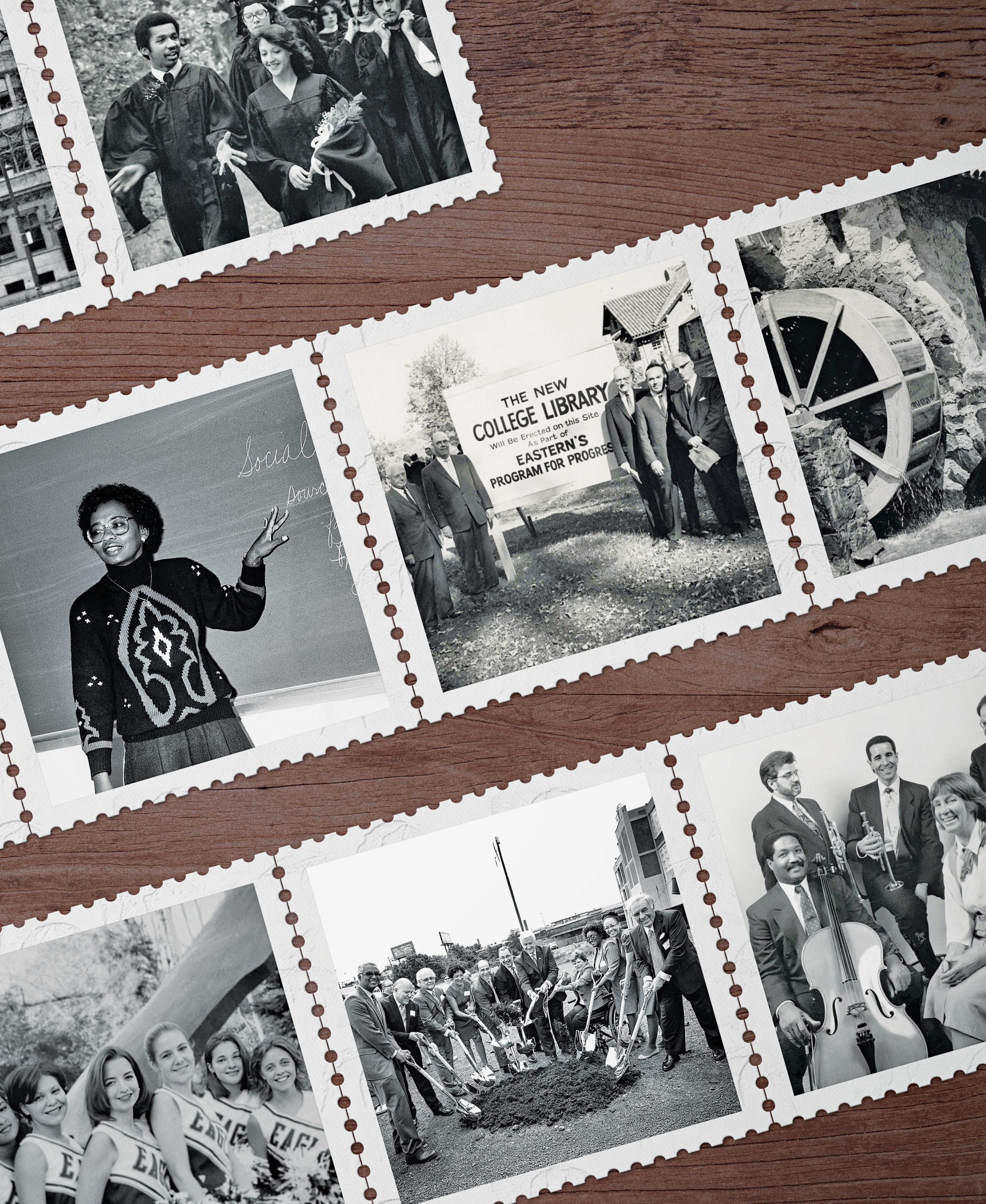
The vision for transformative education would remain just an ambitious idea without the people and places that gave shape to our founders’ mission and dream. This chapter reminisces on the life-shaping places that have established our community and honors many of the trailblazing leaders who have been vanguards in Christian higher education.

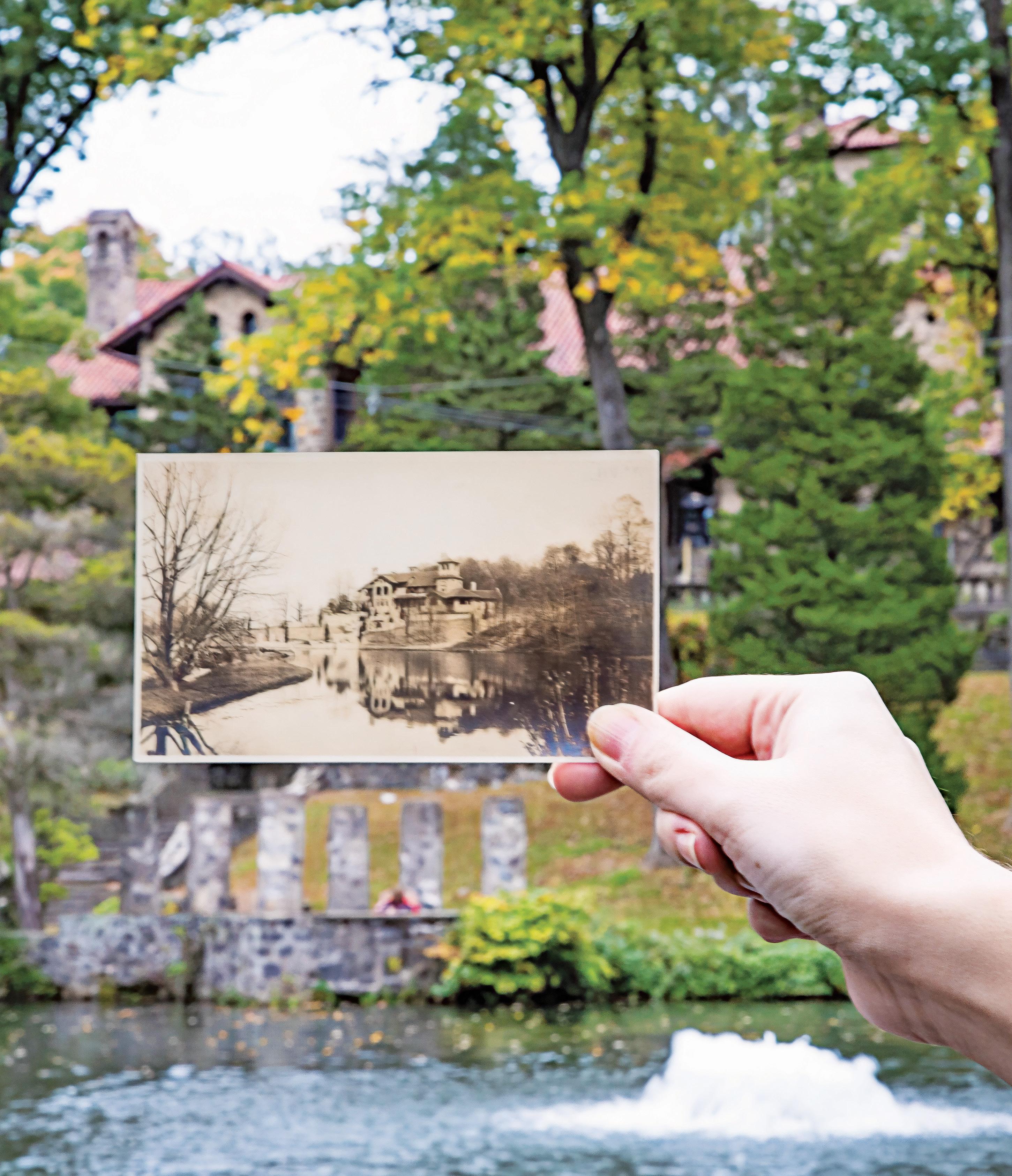
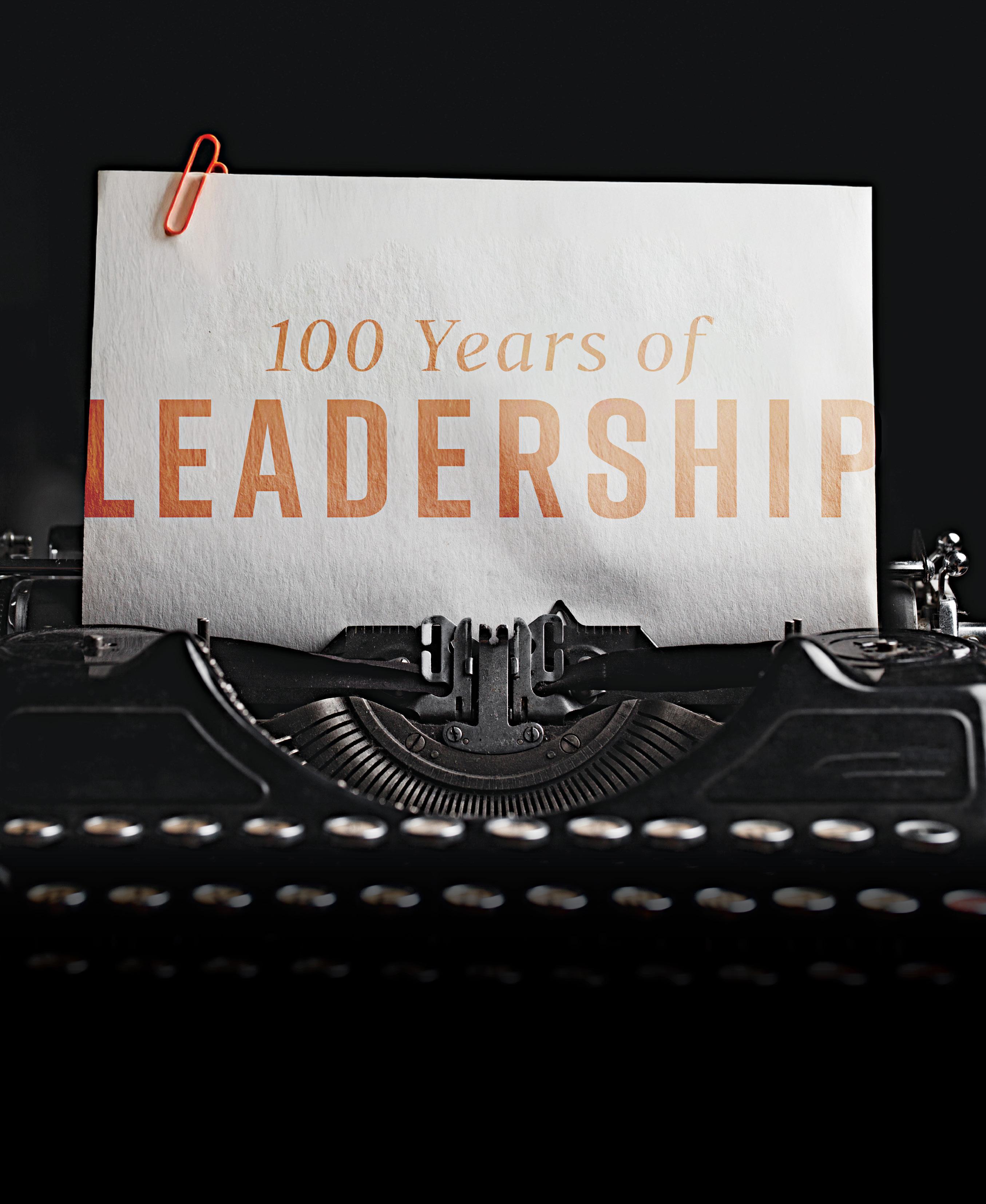
LEADERS LEAVE LEGACIES. Since its founding, Eastern has been blessed by transformative leaders who have guided and directed the institution while remaining faithful to its lasting mission. Here, we honor the seventeen presidents who have helped to steward Eastern's impact throughout the last century.
President of Eastern Baptist Theological Seminary
Rev. Dr. Charles T. Ball was both founder and first president of Eastern Baptist Theological Seminary (now Palmer Theological Seminary) in 1925, as well as a professor of psychology of religion. A man of vision and a skillful promoter of the Seminary’s mission, he served as president for just one year.

1936-1948
President of Eastern Baptist Theological Seminary
In the spring of 1926, Dr. Austen K. de Blois was recruited from his co-editor role at The Watchman-Examiner, a Baptist periodical, to serve as president of EBTS.
The Canadian Baptist had a can-do attitude and a plan to match. His most memorable quality was his love of books, so it was no wonder that the Seminary library was named after him in 1936, as he had helped grow the collection to 8,000 volumes.
It is no surprise that the namesake for Palmer Theological Seminary is the longest-serving seminary president, Dr. Gordon Palmer.
Dr. Palmer served as a pastor and chaplain for the U.S. Army from 1917-1919. Known as a true man of God, Palmer was dedicated to lending financial aid to the seminarians, including the development of scholarships and other funds to aid the Seminary. This task was made all the
more difficult thanks to the country's recession as well as World War II, but Palmer was able to navigate the stormy waters while simultaneously revising the curriculum and addressing accreditation. He is most well-known for moving the Seminary campus from Rittenhouse Square to Wynnewood. Until its next president arrived in 1950, the leadership of the Seminary was placed in the hands of a Steering Committee, co-chaired by Dean Carl Morgan and Treasurer Harvey Bartle.
He described himself as “theologically conservative, strongly evangelical, and in full agreement with Eastern's doctrinal statement,” and he loved to entertain Seminary and College faculty at his home.

1950-1961
President of Eastern Baptist Theological Seminary (1950-1961) & Eastern Baptist College (1952-1961)
Dr. Gilbert Guffin was soft-spoken and cultured, a very spiritual leader of the institutions and a natural problem solver. Guffin was also the first alumnus to serve as President of both institutions.
In 1952, a dilemma arose: accreditation could not be given while the collegiate department (started in 1932) stayed on Wynnewood's campus, and so the search began to locate a home for Eastern Baptist College (EBC). Guffin led the purchase of the Walmarthon Estate, the Bonalthon, and Taggart properties and oversaw the transition of the collegiate department to the St. Davids campus, thus becoming president of both EBTS and EBC.
President of Eastern Baptist Theological Seminary & Eastern Baptist College
Dr. J. Lester Harnish was the sixth president of EBTS and third for EBC. Harnish was made president to "right the ship," as there had been chatter about the seminary drifting from conservative theological moorings.
Much of Harnish's presidency was occupied with positive responses to the Civil Rights movement – much of which could have been construed as radical during the time.
Acting President of Eastern Baptist Theological Seminary & Eastern College
Rev. Dr. Henry Osgood was a Seminary alumnus and graduated in 1932 during the de Blois presidency. As acting president from 1972-1973, he covered the gap year as a stabilizing and positive influence, attempting to build unity and harmony between the Seminary and College.
1961-1967
President of Eastern Baptist Theological Seminary & Eastern Baptist College
Energetic and witty, Dr. Thomas McDormand, the institution's second Canadian president, loved to send frequent memos to the community.
During Harnish's presidency, Wallace Smith was a student at the Seminary and later became the first African American professor, not to mention future president of the Seminary. In 1972, Ruth McFarland became the first female administrator in the Seminary's history as the registrar. And, in an effort to foster additional inclusiveness, Eastern Baptist College dropped the “Baptist” in its name in 1971.
Harnish was passionate about fundraising, and was able to raise money for improvements on Palmer Hall, including new apartments for married students with children.
President of Eastern Baptist Theological Seminary & Eastern College
New blood was needed at Eastern, and it came in the form of Dr. Daniel E. Weiss. Weiss was the youngest president to serve the Seminary and College at age 35 and was a very effective fundraiser. His decisive leadership with balanced theological views also allowed the institutions to take steps to promote increased sensitivity and progress in race relations. Under his presidency, Ronald J. Sider became the first non-Baptist professor in 1978, and Orlando Costas became the Thornley B. Wood Professor of Missiology and director of Hispanic Studies in 1979.
President of Eastern Baptist Theological Seminary & Eastern College
The 1980s were a time of great financial crisis and turnover for Eastern. Amid this turmoil, Dr. Robert A. Seiple entered as the eighth president of the Seminary and sixth of the College. Seiple had served as a marine navigator during the Vietnam War, so he knew about handling rough waters and was qualified to suggest that the Board split the Seminary and College administratively for financial stability. Unlike previous presidents, Seiple had no formal theological or pastoral experience but made up for it with passionate theological research.
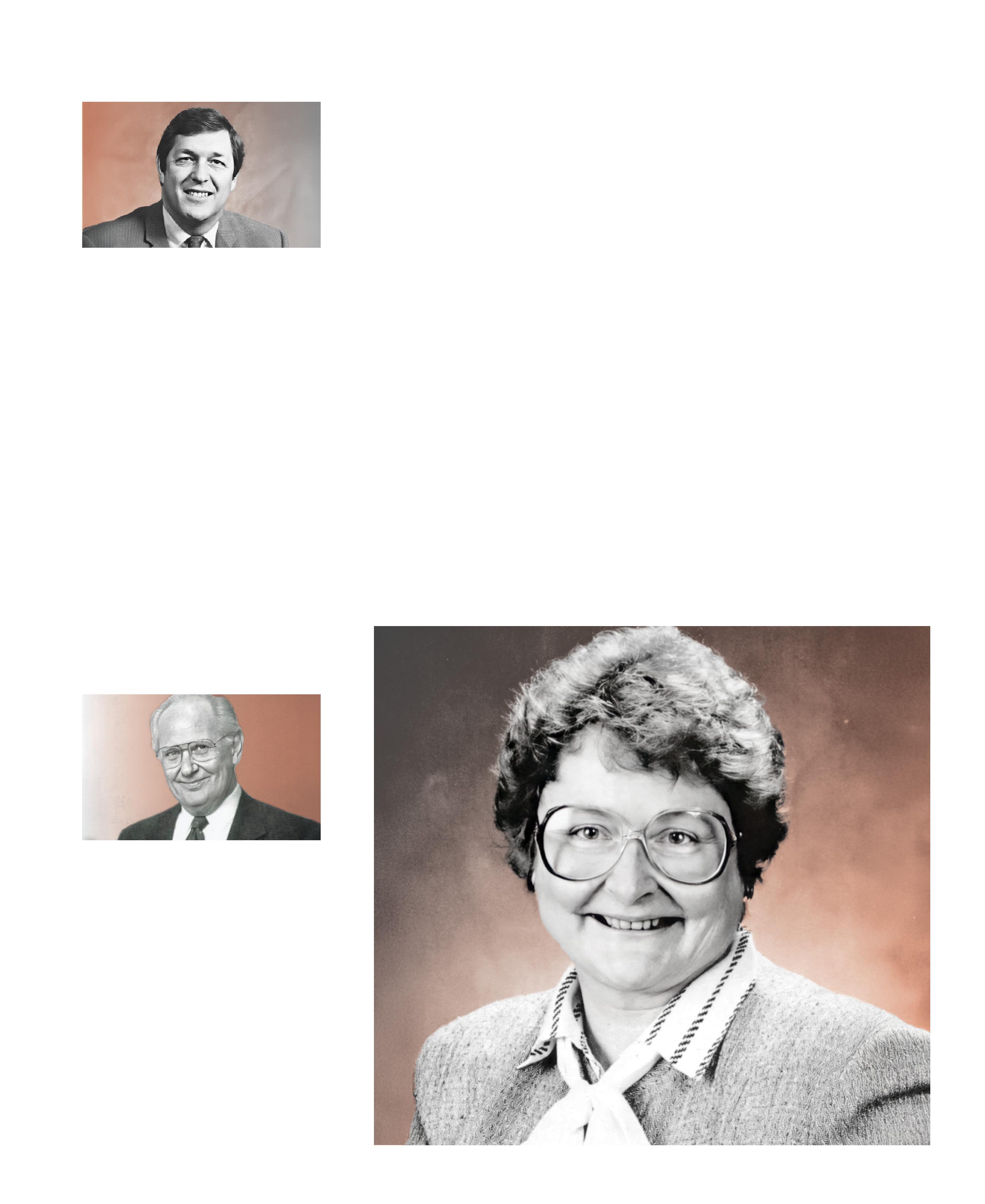
President of Eastern Baptist Theological Seminary
Dr. Robert C. Campbell was named the ninth president of Eastern Baptist Theological Seminary. An alumnus, he taught Biblical Languages at the Seminary and Religion at Eastern College. At 63, he was the Seminary’s oldest president and, unfortunately, inherited significant financial trouble. He did his best to shepherd the Seminary through difficult times before retiring in 1989.
Seiple's suggestion to separate the Eastern institutions went into effect in 1987 when two presidents were assigned. Dr. Roberta Hestenes was named the seventh president of Eastern College, and the first for only the College. She also bears the distinction of being the first female president of either institution.
Hestenes was an advocate for diversity, a champion of justice, a protector of the environment, and a devoted follower
of Jesus Christ. While at Eastern, Hestenes founded the Hestenes Center for Christian Women in Leadership and received the Freedoms Foundation Award and George Washington Honor Medal for a leadership program entitled “Taking Charge.”
Before leaving Eastern, Hestenes had overseen the beginnings of the FastTrack MBA and Degree Completion programs, ensuring Eastern maintained excellent academic standards.
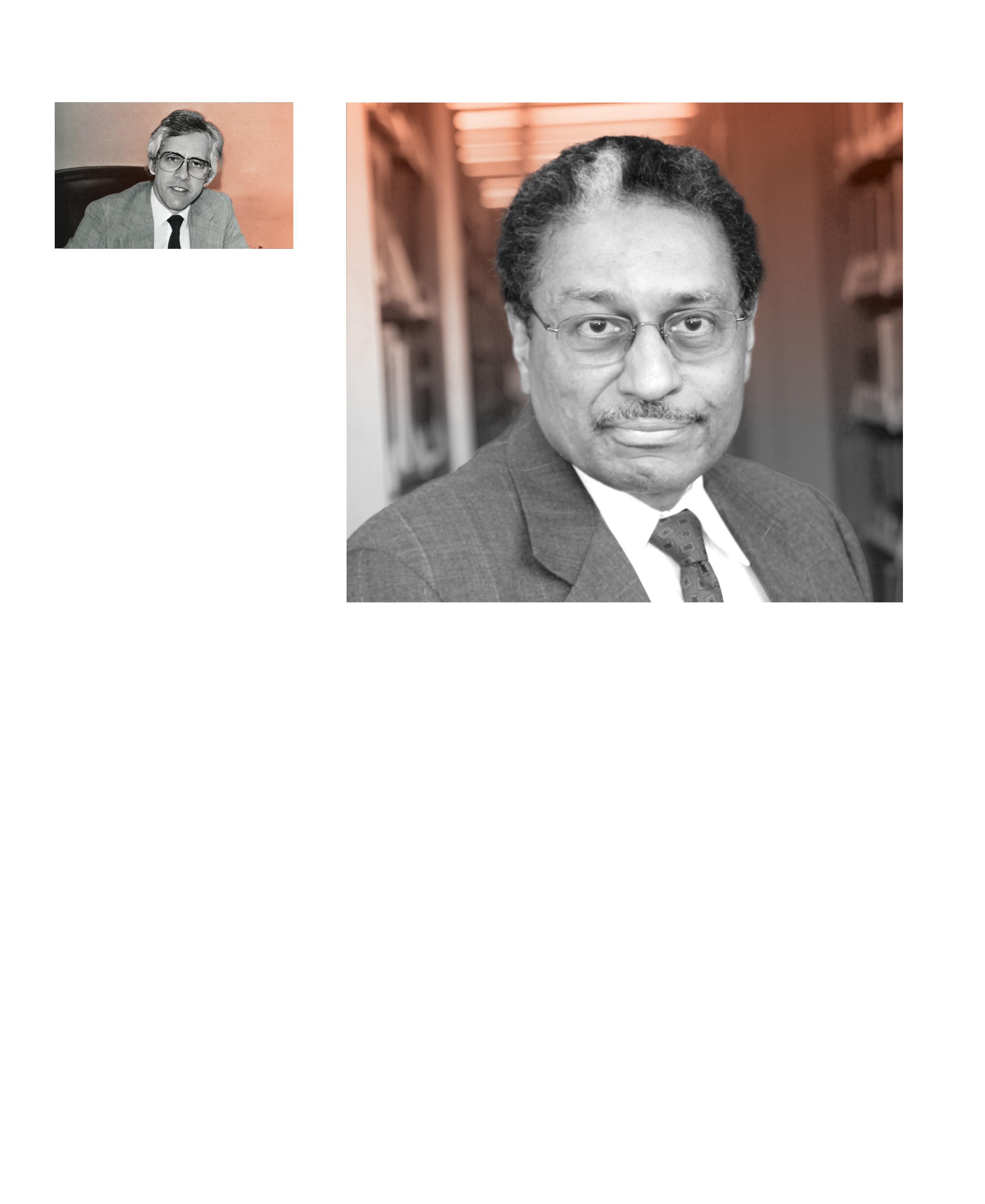
1981-1983 & 1989-1997
Acting President of Eastern Baptist
Theological Seminary & Eastern College (1981-1983)
Acting President of Eastern Baptist
Theological Seminary (1989-1990)
President of Eastern Baptist Theological Seminary (1990-1997)
Originally the vice president, dean, and professor of New Testament interpretation at Eastern Baptist Theological Seminary, German native Dr. Manfred Brauch stepped into a brief role as interim president from 1981-1983 following Weiss’ retirement. He served in this role long enough that he is considered the fifth president of Eastern College, at least in a numerical sense.
Manfred Brauch also returned as acting president of the Seminary for a year in 1989 before being named the official tenth president of the Seminary in 1990. During his seven-year presidency, he helped turn the Seminary around, keeping it afloat financially, spreading the Seminary's mission, and navigating growing pains. He also celebrated the Seminary's successes, including the discovery of a Mozart manuscript in 1990, the establishment of the West Virginia campus, and even the first website in 1996.
At the end of his presidency, Brauch started the Forward in Faithfulness campaign, paving the way towards financial stability for the Seminary.
Before returning to the College, we must mention the last president to serve the Seminary as a separate entity: Rev. Dr. Wallace C. Smith Smith was president of newly renamed Palmer Theological Seminary, having undergone its name change the very year Smith was installed as president. Prior to being president, Smith was well-acquainted with the Seminary, having been a student and returning as the first African American to become full-time faculty.
Smith presided over the final years of the Seminary at the Wynnewood location. While there, he celebrated the Seminary's discovery of yet another famous musical composition, this one a Beethoven manuscript that was sold for $1.72 million in London. He also helped establish the Frank B. Mitchell lecture series, which continues to this day, as well as the Smith School of Christian Ministry in 2009.
Acting President of Eastern Baptist Theological Seminary (1997-1998)
President of Eastern Baptist Theological Seminary (1998-2002)
Following Dr. Brauch, Dr. R. Scott Rodin started as acting president of the Seminary for a year before transitioning into the official 11th president of EBTS from 19982002. Similarly, Rodin was no stranger to Eastern, having been the vice president for advancement of the Seminary in 1993.
The Forward in Faithfulness campaign flourished under his leadership, leading to much-needed improvements for the Wynnewood campus and the creation of the Seminary's distance-learning program, which has only expanded since his departure.
as its president, who would become the longest-serving College president.
Black's presidency was marked by the apropos phrase, “a man of many hats.” Black first served as president of only Eastern College, then Eastern University when the institution obtained university status in 2001, and then president of both the University and Seminary in 2010 when Smith retired.
Enthusiastic and driven, Black also oversaw many of the changes on the University's campus, from construction projects to the establishment of Templeton Honors College, the School of Leadership and Development, the Campolo School for Social Change, and Esperanza College. Thus, his stamp remains on many aspects of Eastern’s current landscape.

President of Eastern College/University (1997-2012) & Palmer Theological Seminary (2010-2012)
Following Hestenes' retirement in 1996, Eastern College hired Dr. David R. Black
2013-2018
President of Eastern University & Palmer Theological Seminary
Ninth president of the University, Dr. Robert G. Duffett, was also the 13th president of Palmer Theological Seminary.
As president of Eastern University, Duffett's largest contributions include creating a Campus Master Plan, reorganizing the colleges and schools of the University, and relocating Palmer Theological Seminary to the St. Davids campus. He also oversaw the Diversity and Inclusion Task Force to create and facilitate a more inclusive community.
President of Eastern University & Palmer Theological Seminary
As the 10th president of the University and 14th of the Seminary, Dr. Ronald A. Matthews has been a member of the community since 1992, when he first served as professor and then chair of the Music Department.
Matthews guided the University through the COVID-19 pandemic with the transition to temporary fully online learning. During the pandemic, the University launched a new series of fully online, affordable, and flexible programs called “LifeFlex programs,” which proved to be highly successful. The University also updated and clarified its Vision, Mission, and Values in 2022.
Since then, under the leadership of Matthews, enrollment has nearly tripled and grown to its largest in the University’s history, continuing to expand programmatic offerings to make an Eastern education excellent, accessible, and affordable.
About the Author: Chelsea Post serves as Systems Librarian at Eastern.






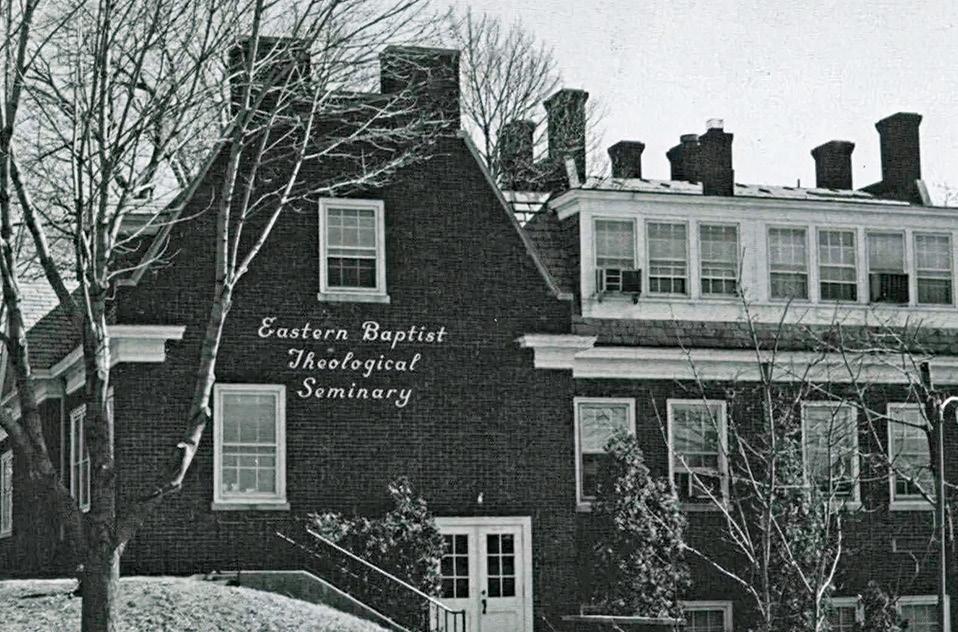

1.
RITTENHOUSE CAMPUS
Eastern Baptist Theological Seminary was founded on March 19, 1925, in Philadelphia, with its first location at 1812-1814 South Rittenhouse Square. This site marked the beginning of Palmer’s mission to train leaders for Christ-centered service.
5.
WEST VIRGINA CAMPUS
Since 1993, the Parchment Valley Conference Center in Ridley, WV, has been home to Palmer Theological Seminary’s West Virginia program. Surrounded by natural beauty, it offers a peaceful setting for the Master of Divinity, Doctor of Ministry, and certificate programs.

2.
Willow Lake, a 1.4-acre sanctuary surrounded by century-old trees, offers students a serene spot to reflect and connect. Nearby, the Waterwheel, built in 1912 and one of the oldest operational waterwheels in PA, stands as a historic symbol of Eastern’s legacy.
6.
Once part of the Walton Estate, the Log Cabin became a beloved student hub when repurposed by Eastern Baptist College in 1953. It served as a symbol of the College's close-knit community and remains a cherished memory for alumni who recall countless moments spent there.
9.
OLSON FIELD
Named after alumnus and board member Chip Olson ’90, Olson Field hosts Eastern’s Division III MAC sports teams. On any given day, the field is filled with the energy of student-athletes competing and fans cheering from Kea-Guffin Hill.
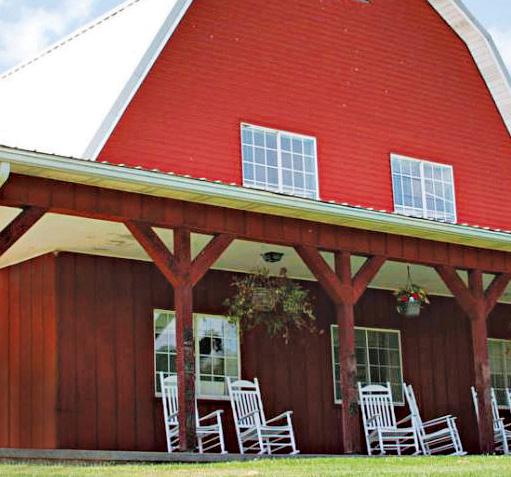

3.
WYNNEWOOD CAMPUS
From 1939 to 2012, the beloved Wynnewood campus was home to generations of seminary students. For 75 years, Palmer Hall served as the hub of spiritual formation and academic rigor, shaping the vision and mission of Palmer’s present-day identity.
7.
ESPERANZA CAMPUS
A beacon of hope in Philadelphia, Eastern’s Esperanza College has been providing accessible, affordable, and culturally relevant faith-based education for Latino/a students in the vibrant North Huntingdon Park neighborhood for over 25 impactful years.
10.
MCINNIS HALL
Completed in 1972, McInnis Hall is the largest academic building on Eastern's St. Davids campus. It features classrooms, offices, an auditorium, science labs, and a rooftop observatory—spaces that have inspired students for decades to pursue purpose.


4.
The Prayer Chapel in Walton Hall has long been a sacred space for reflection, prayer, and worship. Originally a billiard room in the Walton Estate, the chapel is now a sanctuary where the Eastern community can connect with God and pursue lives of purpose.
8.
Built in 1964, The Warner Memorial Library is a resource for Eastern students, offering research assistance and a quiet study place. The library honors Frank Warner, whose son donated generously in 1993. The Harold Howard Center honors former Vice President Harold C. Howard.

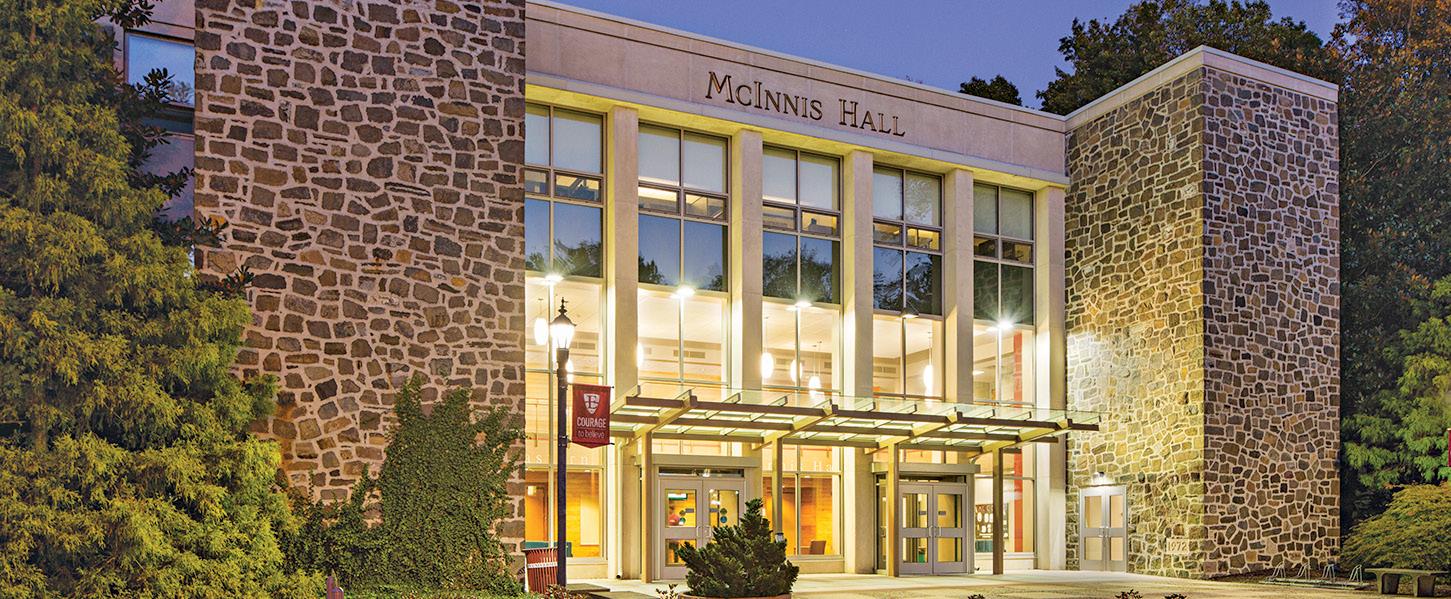
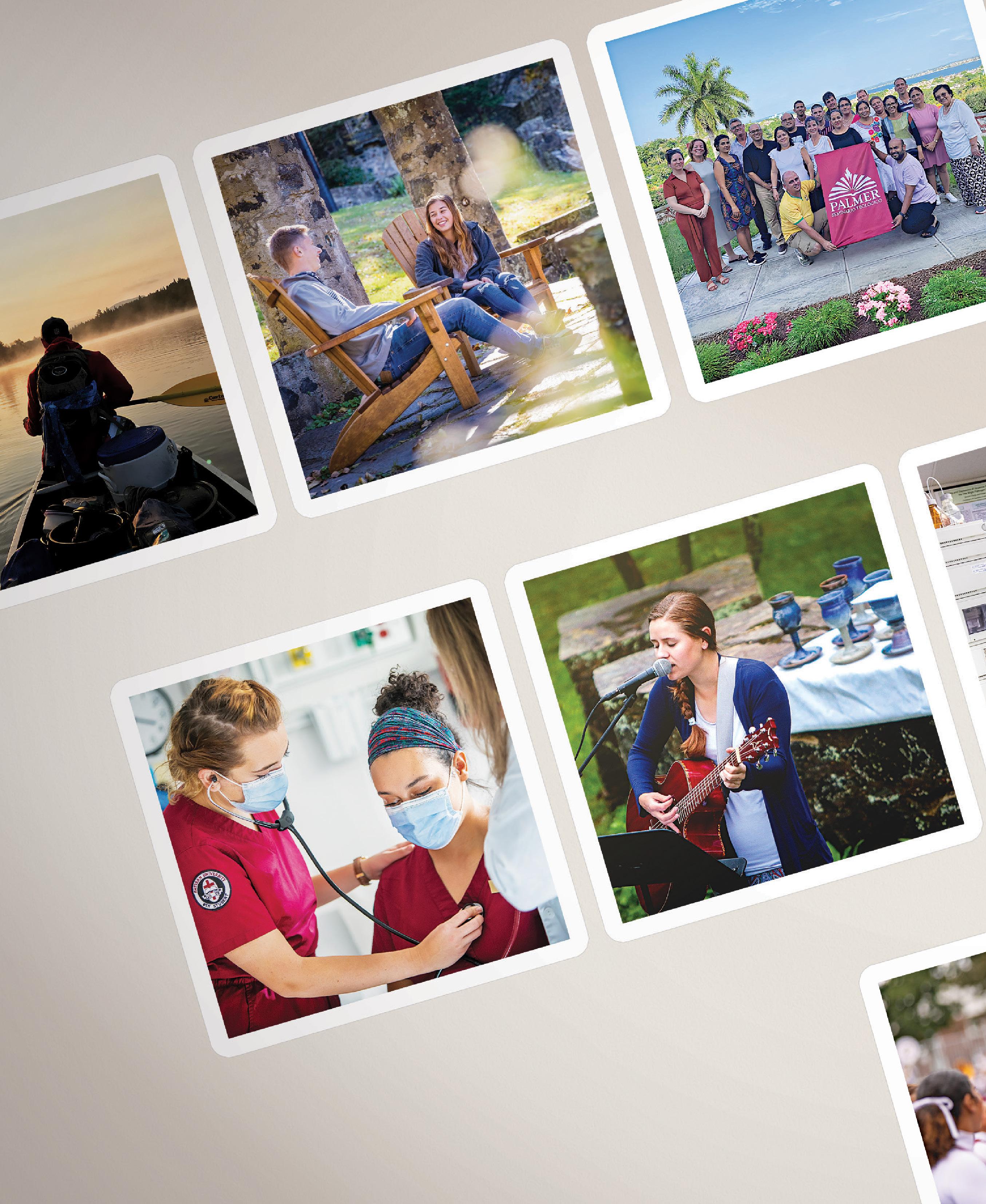





Recent renovations created a new Admissions Welcome Center within a building renamed to honor our Centennial Year.
By Kelly Goddard
THE LAST FIVE YEARS AT EASTERN UNIVERSITY have been a time of unprecedented growth, innovation, and expansion. It has been an absolute joy to be part of this remarkable season, as the arms of our community have embraced thousands of new students. Since 2019, Eastern enrollment has nearly tripled, growing from a community of approximately 3,000 students to nearly 9,000 students in 2024.
I’ve always loved the imagery of Isaiah 54:2, which says, “Enlarge the place of your tent, stretch your tent curtains wide, do not hold back; lengthen your cords, strengthen your stakes.” This year at Eastern, we’ve been enlarging our spaces to welcome our new community members. In the Marketing & Enrollment division, this has specifically included a new home for our Undergraduate Admissions team, including a beautifully renovated new welcome center and visitation rooms in the building formerly known as Eagle Learning Center.
Along with the renovations, the building received a new name to commemorate Eastern’s 100th year. Now known as Centennial Hall, this building is the first that prospective families see when they arrive on campus, inviting them to become part of Eastern’s lasting legacy and flourishing future.
While the new Welcome Center and Visitation Rooms mark Phase 1 of the Centennial Hall Renovations, Eastern also has plans to expand the building, including a threestory addition off the back which will include a large Great Room for Admissions events, as well as office spaces for our Undergraduate Admissions team.
We have loved welcoming prospective students and families into the new visitation spaces and hearing their delight over the beautiful renovations. The future at Eastern is bright, and we are grateful for the enrollment expansion that has marked our Centennial season, symbolically captured in the physical expansion of Centennial Hall.
Kelly Goddard serves as Associate Vice
President
for Marketing, Enrollment, and Communications.
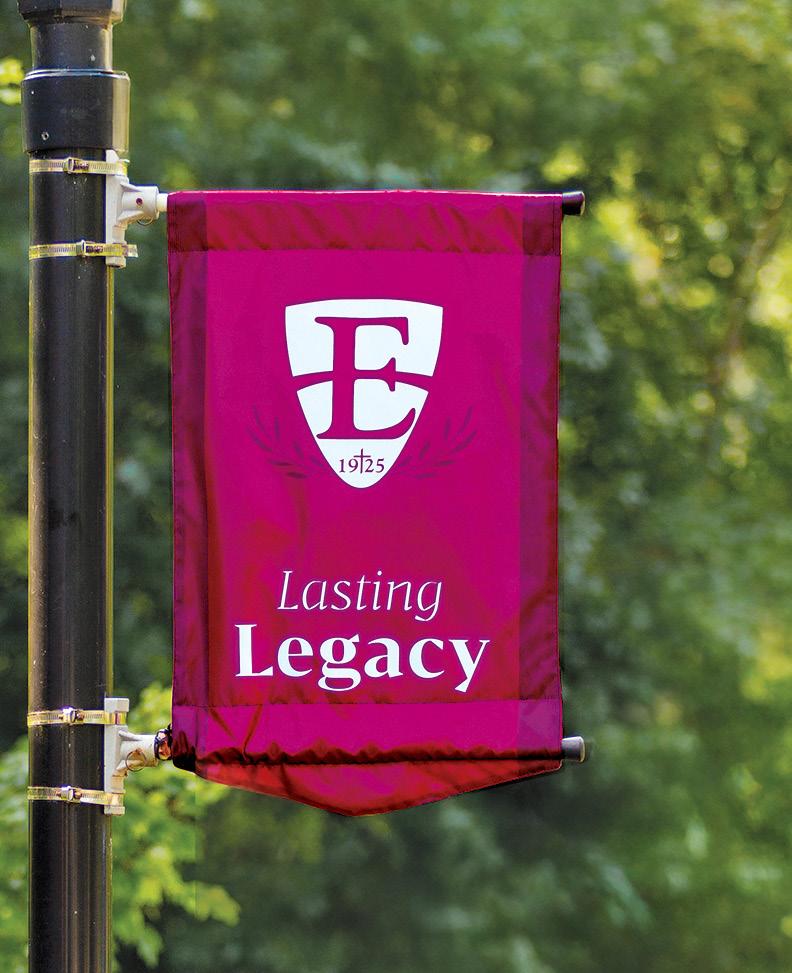




By dan mouw
AS THE UNIVERSITY moves into its second century, Eastern Athletics is spreading its wings and ushering the University into a very competitive athletic space. With the addition of new programs, investments in staffing, and strategic development in facilities, Eastern University Athletics is growing and poised to compete at the top of Division III.
Unprecedented Growth: The foundation laid when the University launched its first basketball team in the 1950s has developed into a flourishing part of Eastern’s campus life. Over the years, a total of 24 programs were added, with unprecedented growth happening over the past 10 years. The addition of Track and Field, Esports, Cheer and Dance, Marching Band, Men’s Volleyball, and Football programs during that time has helped grow the

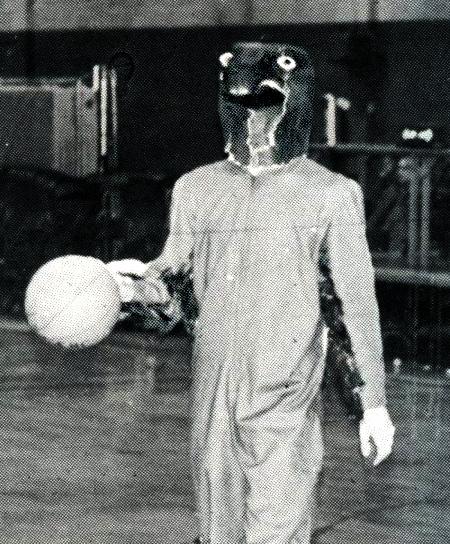


Over the years, our mascot, Beaker, has changed in fun and exciting ways. Take a look back at his journey from his early days to the spirited icon he is today!
department from around 260 athletes in 2014-15 to nearly 700 athletes this Centennial year.
Enhanced Staffing: With that growth, the Athletics Department has been intentional in its staffing efforts, including hiring full-time head coaches for every sport along with assistant coaches and graduate assistants for most larger programs. Academic support professionals, along with strength, conditioning, performance, and wellness personnel, have also joined the department to care for our student-athletes holistically. Thanks to the support of our Athletic Training and Athletic Communications staff, the department will stream nearly 150 events in the 2024-25 season, and Eastern’s five fulltime certified athletic trainers will use nearly 75 boxes of tape to treat ankles, wrists, and knees.
Improved Facilities: In 2022, the University signed a longterm lease with Valley Forge Military Academy, which now provides an extra weight room for all of Eastern’s teams, as well as a home Football field and important practice facility for Track and Field. Eastern’s Softball Field had an overhaul completed in 2019, and Eastern’s Baseball Field, known as “The Yard,” has been under construction since the fall and will boast an entirely new facility with synthetic turf in the middle of campus. The turf field will limit the impact of bad weather on the schedule and will enable the program to compete for top recruits with the leading teams in the region.
Future Plans: Beyond the growth that has already happened, Eastern Athletic Director Eric McNelley has announced the University’s intention to add several more men’s and women’s sports thanks to the planned expansion of the indoor athletic facility on the St. Davids campus. These additions will enable us to serve a larger and increasingly more diverse group of student athletes as we fulfill the mission of the University.
As exciting as the growth in athletics is on a University level, it is even more rewarding to see the impact that Eastern coaches, professors, and peers have on the lives of the student-athletes in our growing programs. Students are being transformed by their participation in Eastern’s athletic programs, developing character traits like perseverance, courage, faith, and teamwork that will stay with them for the rest of their lives.
Dan Mouw serves as Director of Athletic Communications.


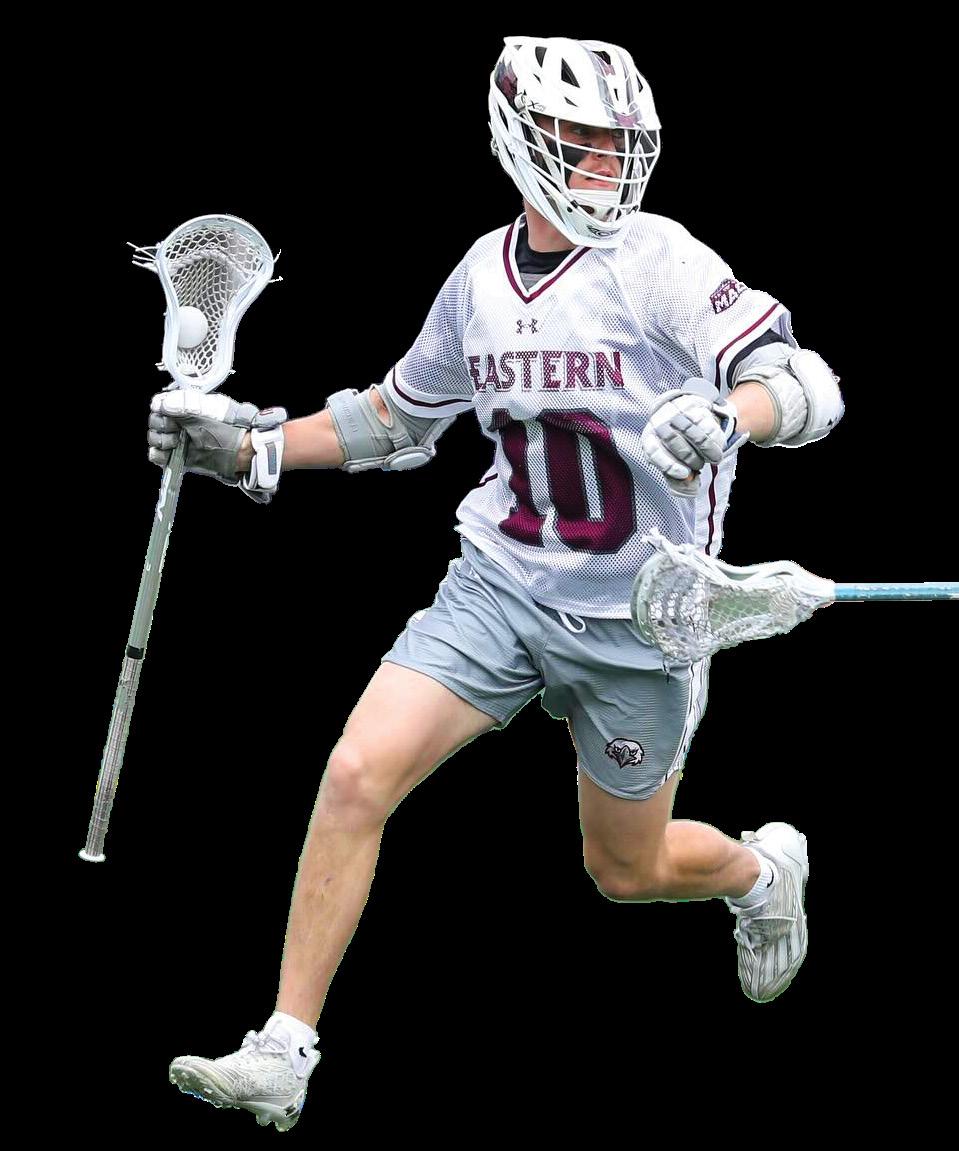
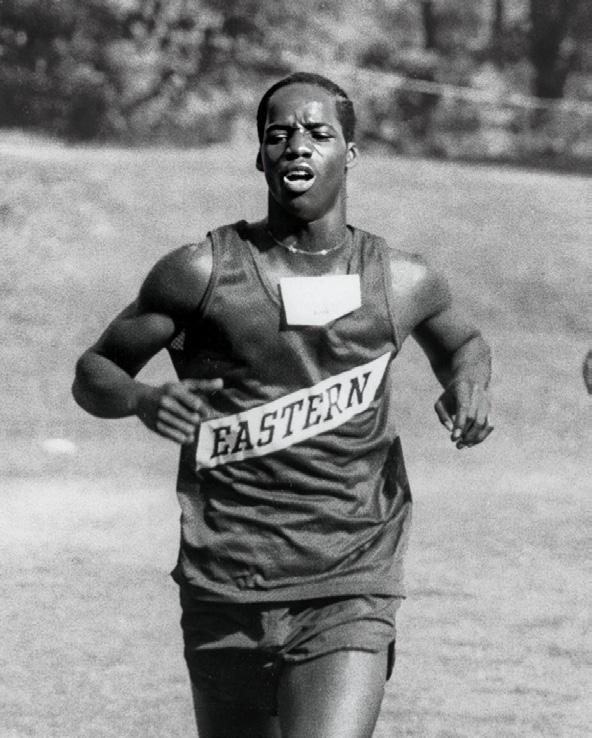



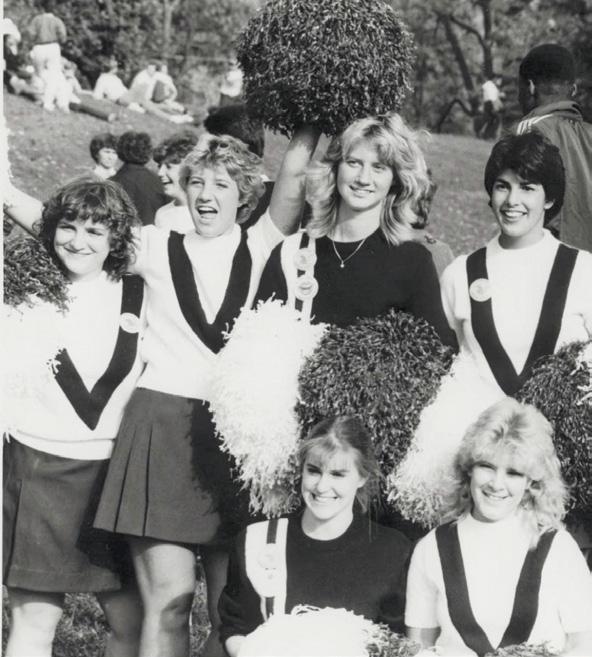


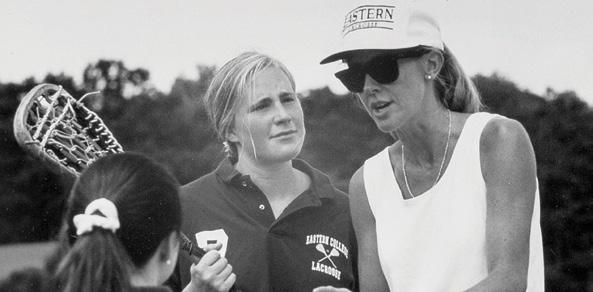
shape our buildings, and afterwards our buildings shape us.” These words, uttered by Winston Churchill during debates about rebuilding the House of Commons, capture truths central to environmental psychology and the phenomenology of space: architecture both embodies and shapes our beliefs and practices. The architects of Chartres’ cathedral, Oxford’s spires, and America’s skyscrapers created buildings through which they curated cultures because no space is neutral and every space nurtures.
This insight, that spaces become places within which people are shaped, has guided the transformation of Workman Hall into Templeton Hall. Once completed, Templeton Hall will include seminar rooms designed for conversational pedagogy, common spaces to support friendships, a library for study and research, hospitable spaces for guests, a gallery for visual art, and a hall for concerts, lectures, and worship. These spaces will become places that shape future generations of students and scholars, participants and performers, visitors and visionaries.
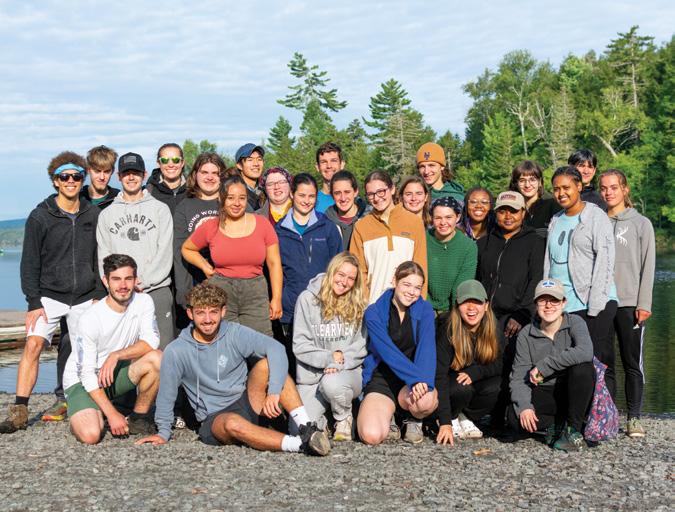

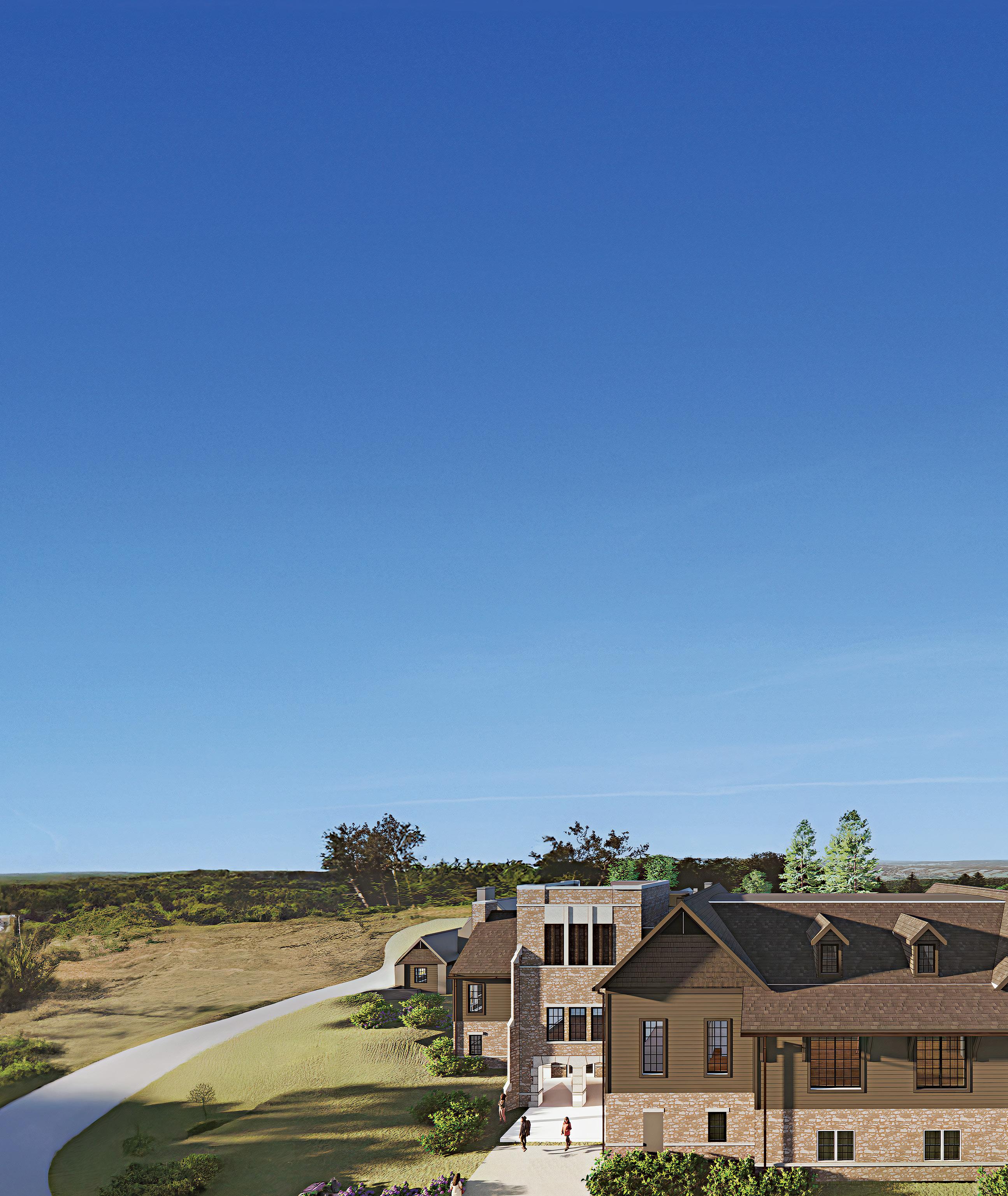
But how will Templeton Hall embody our beliefs and shape our hearts and minds? First, by supporting our commitment to pursue the True, Good, Beautiful, and Holy within a deeply formative community. The Templeton Honors College views education as holistic formation for life-long flourishing. That kind of formation uniquely happens in the fulsome community this building will foster. Its classrooms will support Templeton’s pedagogical commitment to small seminars and its common spaces will encourage virtuous friendships and leisurely conversations.
Templeton’s commitment to formation in community distinguishes it from institutions that reduce higher education to an academic factory producing disciplinary specialists for the research university, a job center training skilled employees for the labor market, or a political foundation breeding the “right” kind of voters for election day. These merely modern approaches flatten the humanity of students into a single dimension. Instead, Templeton honors the full humanity of our students and treats them as capacious images of God intended to flourish in every sphere of life—private, public, and professional.
Our commitment to the intellectual, moral, aesthetic, and spiritual formation of students alongside their professional preparation situates Templeton within the long tradition of Christian liberal arts education. The classic design of Templeton Hall embodies our belief in the goodness of tradition and articulates the College’s commitment to the sifted wisdom of the past over the shifting sands of the present.
by Dr. Brian

Templeton’s “Great Questions” curriculum introduces students to the collected wisdom of philosophers, theologians, poets, artists, and authors. Our commitment to begin contemporary questing with classical wisdom has been abandoned by many universities, hampering students by cutting them off from the curated insights and conversations of past ages. Templeton’s discerning affirmation of tradition is manifest in the traditional building materials and forms chosen to shape Templeton Hall.
The new building will also bear witness to the enduring goodness of Beauty, another belief abandoned by contemporary culture and absent from utilitarian classrooms that resemble hospital examination rooms more than hospitable living rooms. Instead, Templeton Hall will offer students an academic home of ambient beauty and reinforce our curricular commitment to Beauty and the arts, reminding us we are created in the image of an incarnate God who loves incarnate beauty that can bring refreshing delight to our weary souls and carry the Gospel to a weary world.
We look forward to seeing how Templeton Hall shapes future generations of students through virtuous Community, wise Tradition, and winsome Beauty. May this beautiful new space become a place that glorifies God, manifests his abundant goodness, and inspires students and scholars to worship with heart, soul, mind, and strength for generations to come.
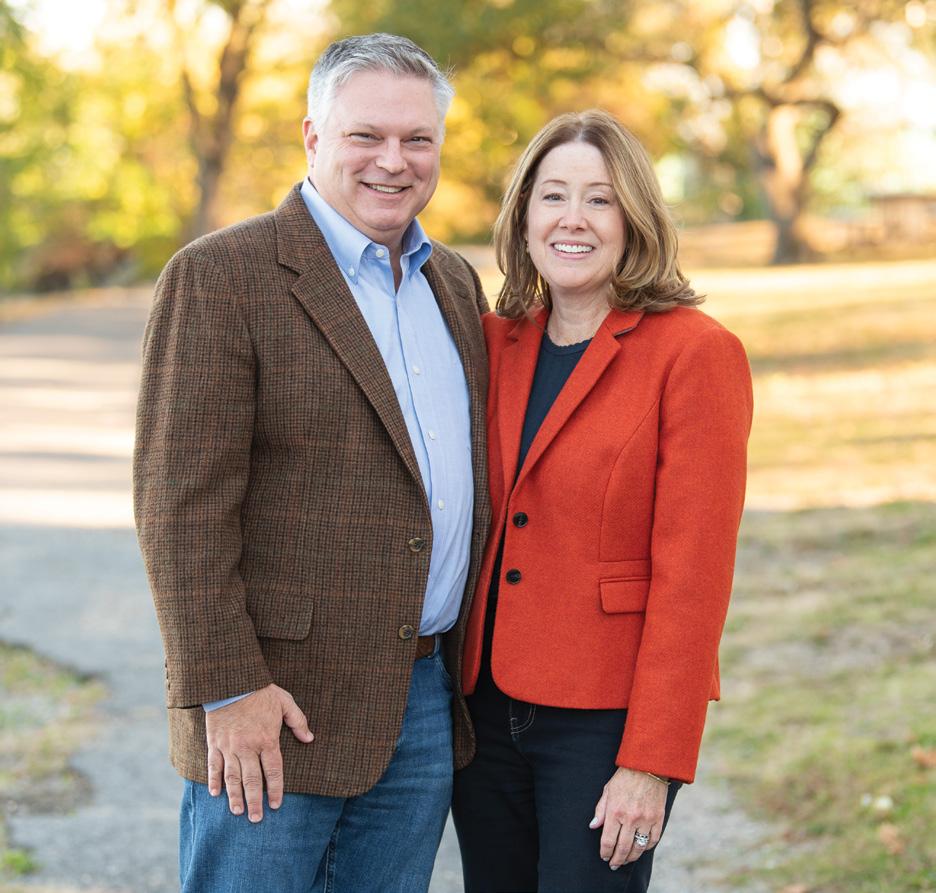
Steve ’91 & Cathy ’92 Clemens share their vision for the next generations
THE SPIRIT OF EASTERN UNIVERSITY is reflected in alumni Steve ’91 and Cathy (Cope) ’92 Clemens, who not only met and built their relationship on our campus but whose emotional, spiritual, and generous financial support has been instrumental in shaping the current health of the University.
Steve has served as the chair of the Board of Trustees for the institution since 2017 and has been on the Board since 2004. “Eastern is part of us," they share. "Supporting these exciting building projects that emphasize the mission of Faith, Reason, and Justice ensures that the Eastern experience is available to others for generations.”
Steve and Cathy have also been key supporters of the Templeton Hall renovations and Eastern’s capital campaign, A Time to Rise. This project is particularly close to the Clemens’ hearts due to their relationship with Jack Templeton, founder of the Templeton Honors College, “a man of conviction, strong principles, and a rigorous pursuit of truth.” They truly believe that Jack embodied the values of Faith, Reason, and Justice and was an inspiration to those in pursuit of a faith-based education.
In the next 100 years, Steve and Cathy hope to see Eastern continuing to send graduates out into the world ready to lead with Faith, Reason, and Justice, while remaining dedicated to supporting the vision and mission of Eastern throughout their lives.
By Erin Ahlefeld
Celebrating a century of inspiring change and shaping futures, Eastern University highlights its many vibrant academic programs and their legacies of nurturing and empowering inquisitive minds. Each of our academic colleges serves not just as a hub of knowledge and learning, but as nurturers of invention and creativity. In our colleges, students and faculty collaborate to transform bold ideas into meaningful action, challenging the status quo, and molding the future of our university and our world.

Dean Timothy Brown
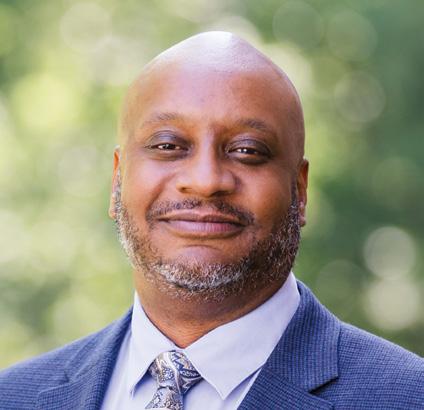
“The College of Arts and Humanities (CAH) provides a transformative educational experience that combines a broad range of arts and humanities fields with Christian values that enable students to apply their knowledge, creativity, and skills to impact the world. CAH has responded to the needs of students by expanding its academic offerings and incorporating real-world opportunities for our students to develop through the expansion of new programs and innovative course offerings, while also fostering opportunities for student leadership, mentorship, and more."
• Expanded Programs: New programs like Music Technology, Theatre History, and Dance Pedagogy meet the growing student interests and career demands.
• Community and Global Engagement: Many of our programs continue to engage in various outreach initiatives to engage the local and global community.
• Expanding Facilities: Templeton Hall will provide new state-of-the-art spaces for the fine and performing arts, including a performance hall, art gallery, and recital spaces.
Dean Christa Lee-Chuvala

“The College of Business and Leadership (CBL) is committed to delivering high-quality, affordable, accessible education that not only equips students with the essential tools and skills they need to excel in business and leadership careers, but grounds them in Faith, Reason, and Justice to become transformative change agents in society. CBL actively engages students in hands-on learning opportunities, such as internships, real-world projects, and credentialing programs, to ensure they graduate workforce-ready."
Tremendous Growth: All of our programs continue to grow, providing high-quality business and leadership education with a strong return on investment.

Dean Susan Edgar-Smith
National Recognition: Our PhD Program was ranked #3 among Forbes' Best Online Doctorates in Organizational Leadership.

Innovative Approaches: Artificial intelligence (AI) is rapidly transforming both the business and education landscapes, and we are integrating new curricular approaches to proactively equip students to use AI tools both ethically and effectively.
“The College of Education and Behavioral Sciences (CEBS) was started with a vision to prepare educators through the lens of Christianity, and that legacy has set the trajectory for our robust programs that we have today. For decades, CEBS has utilized creative modalities to equip educators to meet the ever-changing needs of students through staying abreast of trends in K-12th grade education. CEBS continues to develop programming that prepares competent teachers in areas of technology and instruction by providing high-quality, affordable, flexible education.”
• New Programs & Certifications: We recently launched our MEd in Educational Leadership, MA in Marriage and Family Therapy, Undergrad Psychology Flex program, and many certifications.
• Intentional Grant Application: CEBS faculty have secured numerous grants that greatly benefit our school, totaling over $2 million in funding.
• Culturally Relevant Education: The integration of Culturally Relevant and Sustaining Education Competencies prepares our educators to meet the needs of a continually changing student population.

Dean Tracey Greenwood

“The College of Health and Sciences (CHS) is at the forefront of equipping graduates with the knowledge, skills, and ethical foundation needed to thrive in fields that directly impact the well-being of individuals, families, and communities. CHS integrates transformative Christian values into our curriculum, preparing students to approach their work with both professional competence and moral integrity. The College also fosters a culture of research and community engagement that addresses real-world challenges while providing our students with hands-on opportunities to apply their learning in meaningful ways.”
• Accreditation Celebrations: This year, we celebrate the accreditation of our MSW, BSN, and MSN programs, the 10year reaccreditation of our Exercise Science program, and the 50-year anniversary of our BSW accreditation.
• New Program Launches: Launching the Master’s in Data Science, Master’s in Social Work, and our online MSN has been a point of pride for our college.
• Pennsylvania School Nurse of the Year: MEd in School Health Services graduate, Emily Hunter, MEd ’21, BS, RN, CSN, was named the Pennsylvania School Nurse of the Year by the National Association of School Nurses for 2024.
Acting Dean Nilsa Graciani
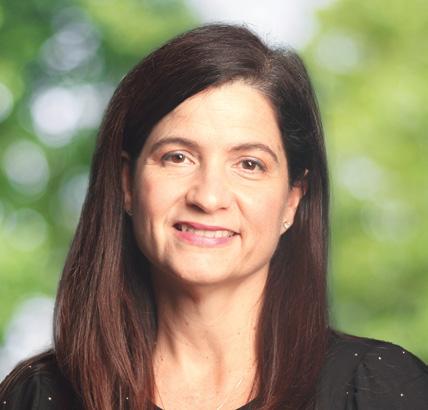
“For nearly 25 years, Esperanza College has been reaching the Latino community of North Philadelphia by providing quality education, much needed community resources, and hope to enhance the outlook of our neighbors to help them thrive. In addition to our academic programming, our summer experiences for high school students, including career exploration, STEM and internships, our education workshops, our intentional community engagement, and our cutting-edge technology, tools, and pedagogy have firmly planted Esperanza within the community of Hunting Park as an invaluable institution as we seek to close the gap and bring higher education and a flourishing future to North Philadelphia by offering hope, grace, and redemption.”
Student Supports: We continue to meet our students' needs by offering academic and career advising, coaching, tutoring, clubs and groups, a food pantry, and additional supports including mental health counseling, housing, immigration services, arts and culture, and more.
Conferences & Workshops: We continue to host events including the Early Childhood Education Conference: Advancing Early Childhood Education in the Latinx Community, the Minorities in Health Sciences Symposium, Esports tournaments, and Health Career Series as well as workshops on digital skills and well-being in the classroom.
HOSA Team Places: Esperanza College’s HOSA (Health Occupations Students of America) Team scored medals at the 45th State Leadership Conference of HOSA Future Health Professionals.
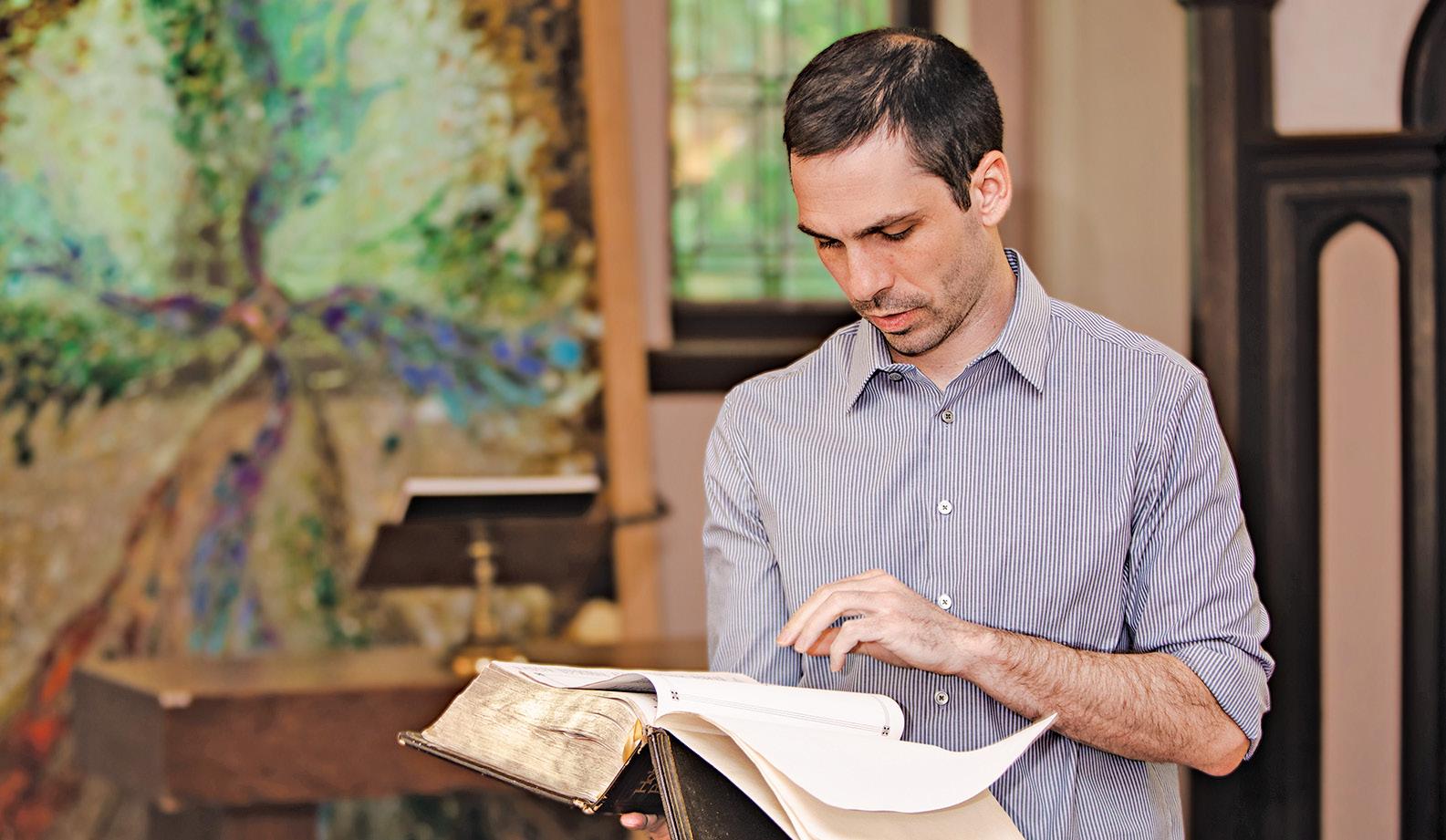
Dean Kimberlee Johnson

“The Palmer Theological Seminary & College (PTSC) at Eastern University is growing and expanding to extend the reach of our lasting legacy and pave the way for a flourishing future founded on Biblical and Spirit-inspired principles. From our Openseminary programs to our Maestría en Estudios Teológicos, Palmer’s mission to serve God and the Church by providing theological education for all types of ministry throughout the whole world is flourishing. Accessible theological education, alumni support through the CARES program, and a transformative seminary approach are reflective and honoring of the founders that came before us.”
• Science and Religion Symposium: Palmer continues to host a popular Science and Religion Symposium that creates opportunities to engage in conversation around the intersection of faith and science.
• Lilly Endowment: The $1,250,000 received grant serves to cultivate and to strengthen PTS’s “Compelling Preaching for the 21st Century: Whole Gospel. Whole World. Whole Persons.” project.
• New Program Launches: Recent programs include a PhD in Professional Practice, a new LMin Cohort in Cuba, and the Doctor of Ministry now available in a 100% online LifeFlex format.
• Prison Education Program: This year, we graduated 24 students within our Prison Education program and continue to provide hope for incarcerated students through our programming.

Dean Brian Williams
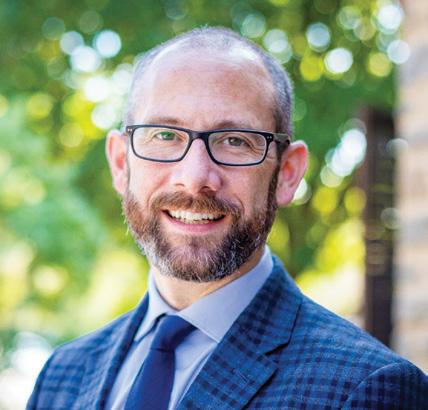
“As we celebrate 25 years of the Templeton Honors College, we celebrate 25 years of pursuing the True, Good, Beautiful, and Holy through our transformative academic culture and curriculum. As it has for a quarter century, the Honors College continues to shape thoughtful students determined to order their loves, worship God, serve their neighbors, and pursue the common good wherever God calls them.”
• MAT Program: Templeton’s Master’s in Teaching Program recently celebrated its 6-year anniversary of shaping outstanding educators for classical schools.
• Templeton Hall: The current renovation and expansion of the new Templeton Hall promises to provide students with beautiful spaces for study, classroom conversations, community, and the nurturing of their faith.
• Summer Scholars Program: The celebrated Summer Scholars Program for high school students returns in Summer 2025 with courses in “The Moral Vision of C. S. Lewis” and “American Revolutions.”
100 years of
OUR EASTERN UNIVERSITY ALUMNI represent over 90 countries throughout the world. This map illustrates more than just individual communities; each pin represents a unique story, a visual of the vast reach and collective impact of our Eastern vision, mission, and values. Each pin reminds us that Eastern is more than an academic institution—it is a crossroads of diverse
cultures, backgrounds, and perspectives. From our far-reaching, completely online LifeFlex programs to our flourishing Maestría en Estudios Teológicos cohorts throughout the Americas, these personal journeys enrich our legacy and empower Eastern’s impact to extend to the ends of the earth.

Coming to the United States and Eastern University was transformative, providing a supportive community to assimilate to American culture, a robust educational experience, lasting friendships, and an environment where I felt valued and challenged to grow as a disciple of Christ. I also met my wife, Erika, at Eastern, and my daughter Ashlynne is currently finishing her final year at Eastern as well.
At Eastern, I learned that the kingdom of God is not just a distant vision, but a very present reality, shaping my worldview and mission. I now see my role joining God in His great rescue and renewing project here on earth.”

THIS PAST NOVEMBER, we both mourned and celebrated the eternal homecoming of Rev. Dr. Tony Campolo ’56, BD ’60, ThM ’61, HD ’06, one of Eastern University's most influential alumni and a beloved member of our community.
A gifted educator, scholar, and passionate advocate for social change, Tony’s career spanned over six decades, leaving a profound legacy behind him. He continually inspired students, faculty, and staff alike as he passionately exemplified the University’s mission of Faith, Reason, and Justice. A beloved member of the Eastern and Palmer alumni community, Tony was in the first graduating class of Eastern Baptist College and continued on to earn several other degrees from both Eastern Baptist College and Eastern Baptist (now Palmer) Theological Seminary.
Tony’s impact reached far beyond academia. His legacy is not only recognized within our community, but throughout the world. His work as a public speaker, author, and champion of the “Red Letter Christianity" movement challenged us all to live out the radical love of Christ through acts of justice, mercy, and compassion that engages with the world’s needs. He also founded Eastern's Campolo Center for Ministry, which continues to equip Eastern University and Palmer Seminary students to grow in faith and make an impact in the world by providing scholarships, mentoring, and discipleship.
Though his impact spans far and wide, those who were fortunate enough to get to know Tony on a personal level will remember him for his colorful storytelling, infectious energy, and gift for blending wit with profound wisdom. As we grieve his absence, we remember the words of 2 Corinthians 5:8: “We are confident, I say, and would prefer to be away from the body and at home with the Lord.”
Tony’s steadfast faith and love, demonstrated in every corner of his life, now find their fulfillment in the joyous presence of the God he so faithfully served. May we continue to live out the values he inspired in us, striving to act justly, love mercy, and walk humbly with our God (Micah 6:8).
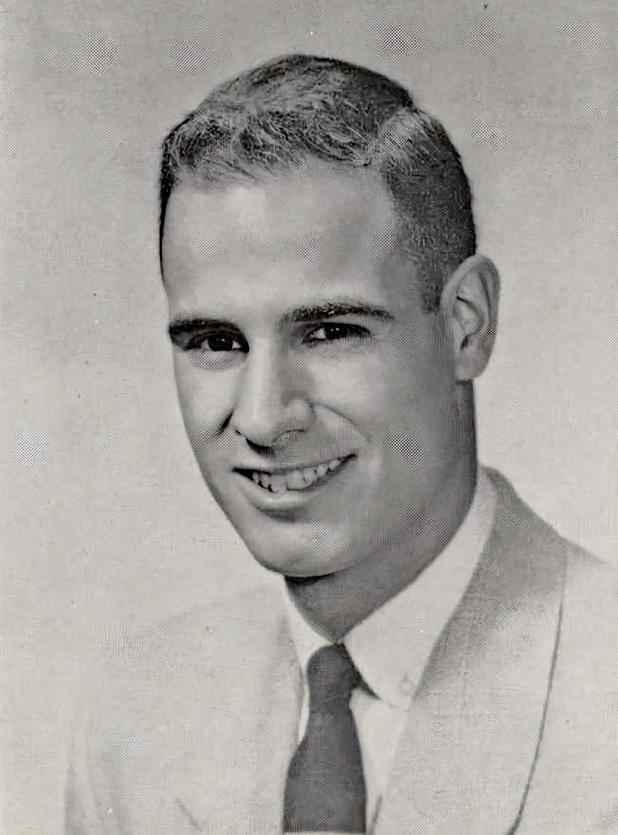
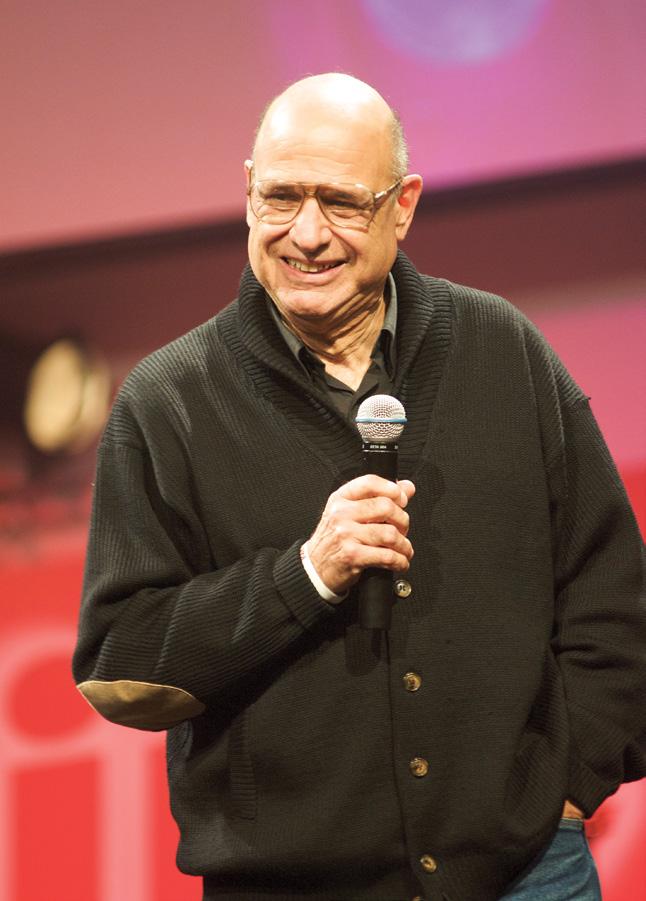

WEDNESDAY, OCTOBER 8 TH - SATURDAY, OCTOBER 11 TH
100 Years of Memories — Come Home to Celebrate! TO LEARN MORE, VISIT: EASTERN.EDU/HOMECOMING
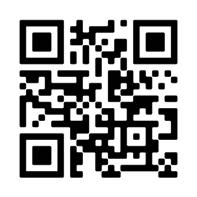
Do you know an Eastern alum who is making a difference in their community and deserves some recognition? We're looking for nominations for Alumnus/a of the Year, Distinguished Young Alumnus/a of the Year, and a staff or faculty member for our Lamplight Society Inductee! Learn more about the awards, read about current award winners, and make a nomination at eastern.edu/alumniawards.

Update us on important happenings in your life by filling out our update form! This form ensures you receive the latest Eastern information and creates space to share with the #EUnited community what's new in your life. Fill out the form today at eastern.edu/alumninewsandnotes.
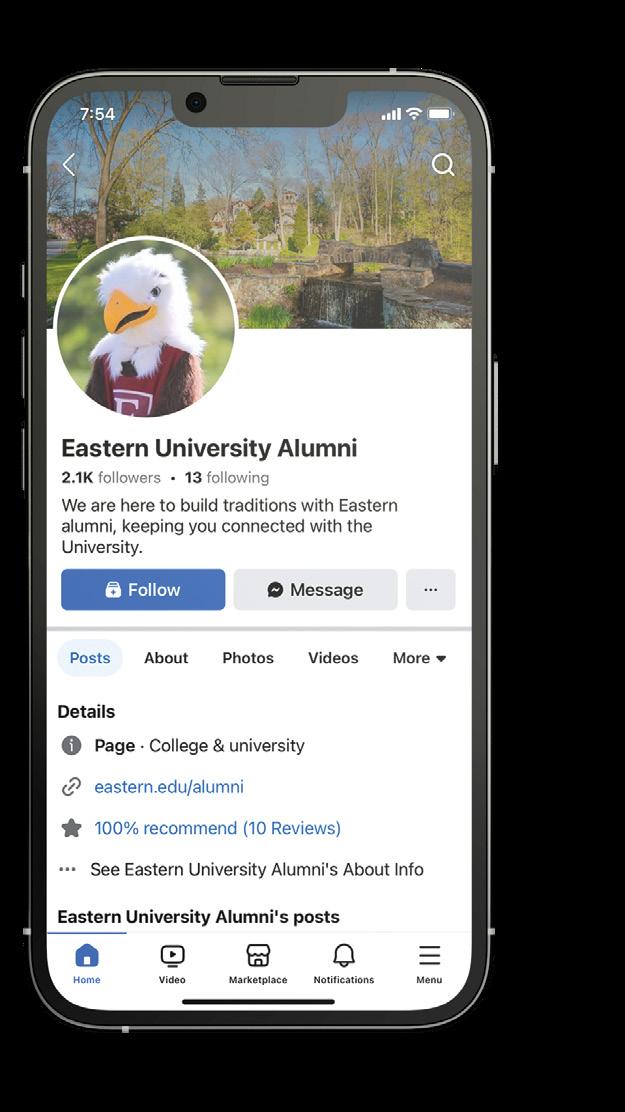


As Eastern University marks its Centennial Year, we reflect on a century of inspiring lives and shaping futures. From our picturesque campus nestled in nature to halls filled with wisdom and camaraderie, Eastern University has been a beacon of light and leadership for generations.
This milestone year invites us to honor our past while looking boldly to the future. Your support plays a vital role in empowering our students, advancing academic excellence, and fostering a community rooted in Faith, Reason, and Justice.
Together, let’s make this Centennial a time to rise higher than ever, ensuring that Eastern University remains a place where potential knows no bounds.
Join us in shaping the next 100 years. Your generosity is our strength.

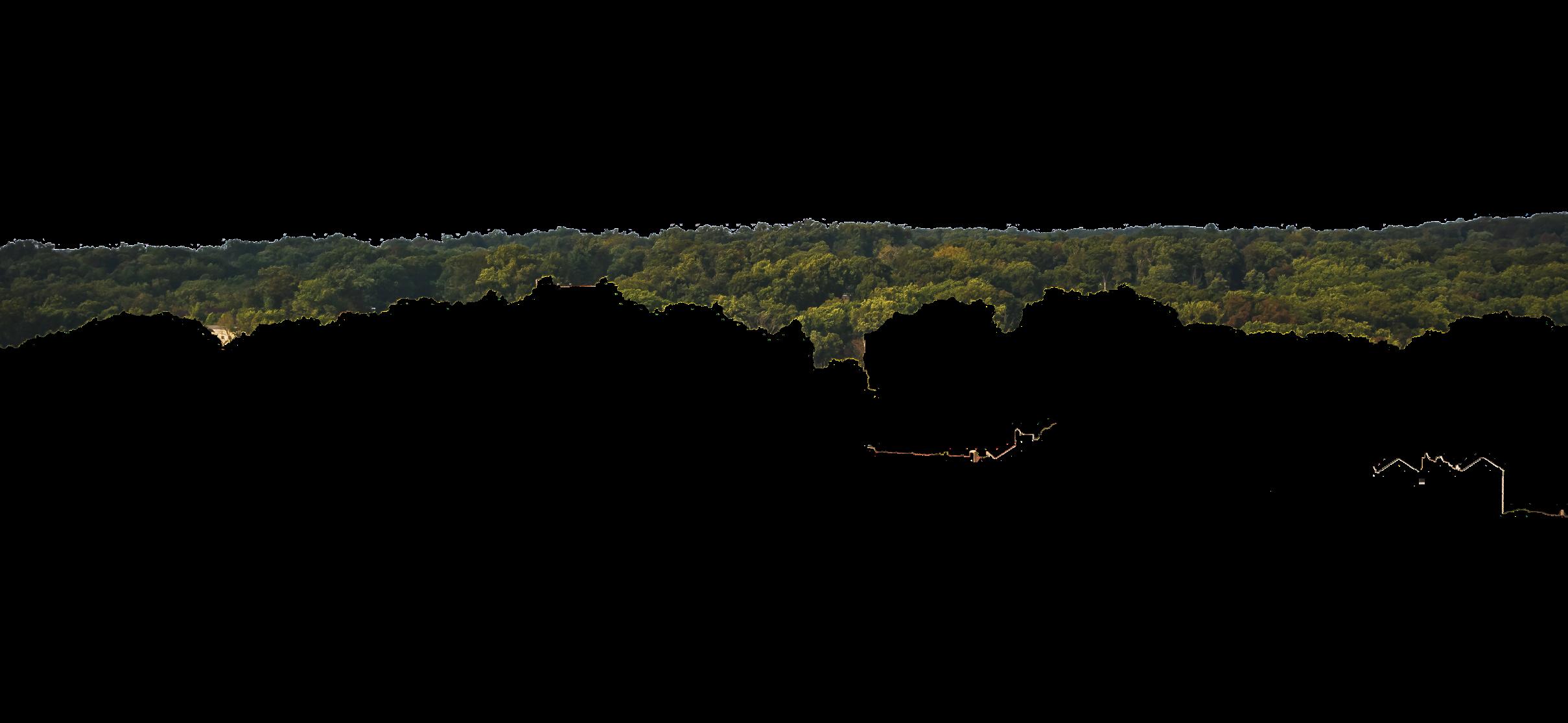
For 100 years, Eastern University has been a place where students live out the values of Faith, Reason, and Justice, bringing these principles to a world that needs them more than ever. We invite you to help write the next chapter of Eastern’s story as we celebrate this centennial milestone.
By making a planned gift to Eastern, you help shape the future of the University and its students. Many alumni and friends have chosen to leave their mark through bequests, gifts from IRAs or QCDs, stocks, or mutual funds. These gifts ensure that future generations will be equipped to lead with excellence, integrity, and authenticity, just as Eastern has done for the past century.
Your planned gift is more than a financial contribution; it’s an investment in the next generation of leaders who will carry forward Eastern’s Christ-centered mission. By including Eastern in your plans, you’ll join the Claghorn Heritage Society, a community of alumni and friends dedicated to preserving the values that have shaped us for 100 years.
Contact the Office of Advancement to explore how your gift can leave a lasting mark on Eastern’s next century. Together, we will continue to be a beacon of light rooted in our values and building an exciting future.

